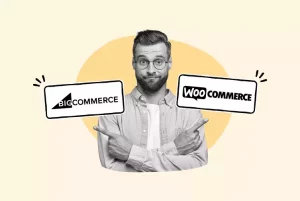
WooCommerce vs BigCommerce: Which one is right for your business?
BigCommerce vs WooCommerce: Which eCommerce platform works best for your business? Read this article to find out!
Shipping, Tracking & Notifications
Boost customer experience and reduce support tickets
Realtime order and shipment tracking
Proactive order and shipping notifications
AI-Enhanced Discounted Labels
Predictive pre-purchase estimated delivery dates
Self-Serivce branded order tracking
Effortless experience delivered
Identify and Resolve Order Issues
Realtime order and shipment tracking
Make returns profitable and delight customers
Flexibility to define any return destinations & conditions
Simplify returns for your customers and team
Incentivize exchanges over returns
Returns management made easy for your team
Returns management made easy for your team
Easy claims and smart upsells
Understand why your customers are returning
In-Store & Curbside Pickup
Unify the online and the in-store experience
Hassle-free pickup experience for customers
In-Store dashboard to keep operations streamlined
In-Store and Online orders unified
Drive foot-traffic to your stores
Shipping, Tracking & Notifications
Boost customer experience and reduce support tickets
Realtime order and shipment tracking
Proactive order and shipping notifications
AI-Enhanced Discounted Labels
Predictive pre-purchase estimated delivery dates
Self-Serivce branded order tracking
Effortless experience delivered
Identify and Resolve Order Issues
Realtime order and shipment tracking
Make returns profitable and delight customers
Flexibility to define any return destinations & conditions
Simplify returns for your customers and team
Incentivize exchanges over returns
Returns management made easy for your team
Returns management made easy for your team
Understand why your customers are returning
In-Store & Curbside Pickup
Unify the online and the in-store experience
Hassle-free pickup experience for customers
In-Store Dashboard to keep operations streamlined
In-Store and Online orders unified
Drive foot-traffic to your stores
Boost customer experience and reduce support tickets
Realtime order and shipment tracking
Proactive order and shipping notifications
AI-Enhanced Discounted Labels
Predictive pre-purchase estimated delivery dates
Self-Serivce branded order tracking
Effortless experience delivered
Make returns profitable and delight customers
Flexibility to define any return destinations & conditions
Simplify returns for your customers and team
Incentivize exchanges over returns
Returns management made easy for your team
Equip your team for precise return checks.
Easy claims and smart upsells
Understand why your customers are returning
Unify the online and the in-store experience
Hassle-free pickup experience for customers
In-Store Dashboard to keep operations streamlined
In-Store and Online orders unified
Drive foot-traffic to your stores
Find the answer to all your questions
Take a step by step trip through our functionality to see how we can improve your ecommerce processes.
Explore the most comon questions about WeSupply
Calculate the ROI that WeSupply can bring you
Read actionable articles on how to optimize your post-purchase experience and decrease support tickets
Get inspired by stories of how our customers implemented an effortless post-purchase experience
Wondering if WeSupply is a good fit for you? Read through our use cases to see how we can help you increase conversion & improve CX!
A Deep Dive into Top Companies' Order Tracking & Returns Strategy
Find the answer to all your questions
Explore the most comon questions about WeSupply
Calculate the ROI that WeSupply can bring you
Request a no strings attached review of your current shopping experience and missed conversion opportunities
Take a step by step trip through our functionality to see how we can improve your ecommerce processes.
Read actionable articles on how to optimize your post-purchase experience and decrease support tickets
Get inspired by stories of how our customers implemented an effortless post-purchase experience
A Deep Dive into Top Companies' Order Tracking & Returns Strategy
Wondering if WeSupply is a good fit for you? Read through our use cases to see how we can help you increase conversion & improve CX!
Understanding and optimizing the post-purchase customer experience for your online store.

Going up against eCommerce heavyweights like Amazon or Walmart can seem impossible for a smaller retailer. They have shaped online consumer expectations over the past few years with big budgets and expertly engineered experiences. They may have endless inventory and an omnipresent web presence, but is there room for competition in 2023?
The answer to this question is a definite yes. We’ve assembled this guide to help many brands work smarter toward increasing conversion, customer retention, re-engaging their audience, and driving future sales.
74% of shoppers say they’re more likely to shop again with most brands that provide estimated delivery dates. This is a great example of how important is to offer estimated delivery dates when it comes to creating a positive experience.
However, 40% of US-based online retailers are missing the mark by showing shipping speeds instead. Quell those shipping anxieties and reap the rewards of higher conversion!
What is the difference between the delivery date and the shipping speed? It’s a matter of clarity vs. non-clarity.
An estimated date of delivery calculator combines past processing stats, carrier data, and specific product information. It synthesizes this information to give a clear day by which the product will arrive. This reduces anxiety on the product page, mitigates cart abandonment, and helps customers choose a shipping method during checkout, ultimately improving the entire customer experience.
Shipping speeds are basic listings of the available shipping options. This leaves out many details, most notably including the processing time. Displaying only the shipping speeds leaves customers to consider many variables before deciding to purchase, but this is still widely practiced.
These can include; upcoming holidays, the number of days before the weekend, order processing time, and more. Oftentimes this overwhelms the customer into not purchasing. At the very least it forces them to use these variables to decide how much they care about the product. Even if the order is placed, this is a very poor (and costly) user experience.
“2-4 Day Delivery” is a weaker message than “Arrives on September 6th.” Many brands who opt for the former verbiage usually do so for one or two reasons:
They practice business-centric thinking. This section is viewed internally as a simple list of shipping options rather than a customer-facing experience. By taking the nuts & bolts approach and not catering to customers’ shipping anxieties, the brand sees a reduced conversion rate.
The brand does not know how to calculate the delivery date accurately. This is something WeSupply can certainly help with.
The brand is not confident in its performance. The brand does not feel comfortable giving a delivery date because they don’t want to mislead customers with inconsistent processes.
Most customers do not view their online order as a two-part scenario in which you shift responsibility to the carrier midway. The end-to-end process of click to delivery is one experience that speaks to your relationship with the customer. This gets further complicated when you take into consideration the naming convention of most popular shipping services.
A customer selecting UPS 3-Day Select is reasonably expecting to receive the order in three days. In actuality, this means three days after UPS picks up the package, and doesn’t account for weekends or holidays. Not including these factors will disappoint customers. Consider a customer who pays extra for 3-Day Select on a Tuesday to get an item before the weekend.
By opting for clearly displaying the delivery date, you just make it easy for the customer. They can choose to pay an extra few dollars for the item to arrive on the Friday before a holiday weekend. Otherwise, they can wait until the following Tuesday when shipping time resumes. No math is required to make the appropriate decision.
Let’s look at a few examples of delivery dates and shipping speed. Remember, customer satisfaction is equally based on what information you show and how you show that information.
Macy’s has made it very clear that we’re on our own when it comes to information. This approach is absolutely not recommended, even for a brand as big as they are.
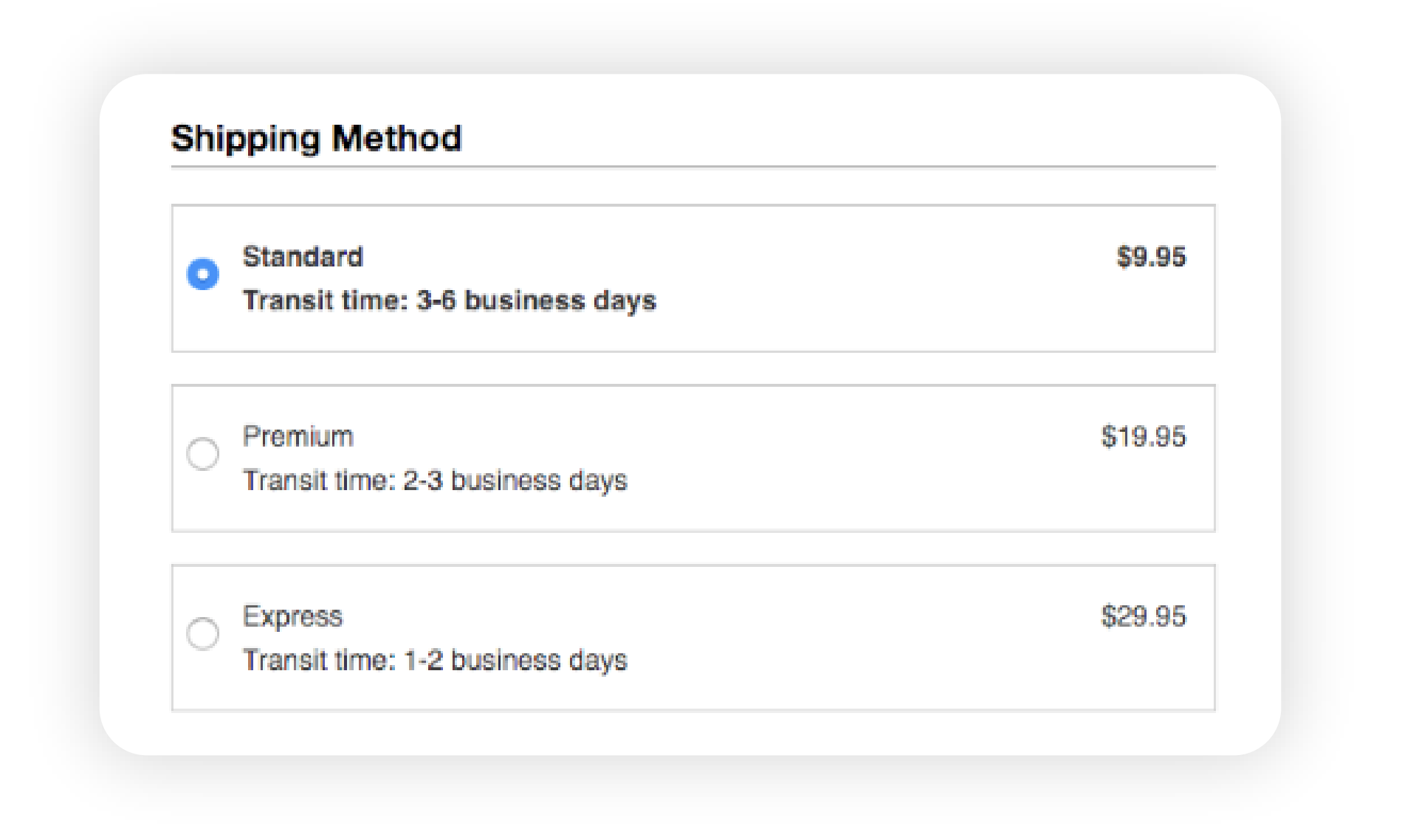
Nike is a little more successful in its efforts. They’ve included more information, but it’s confusing because the customer doesn’t know how it applies to them specifically.
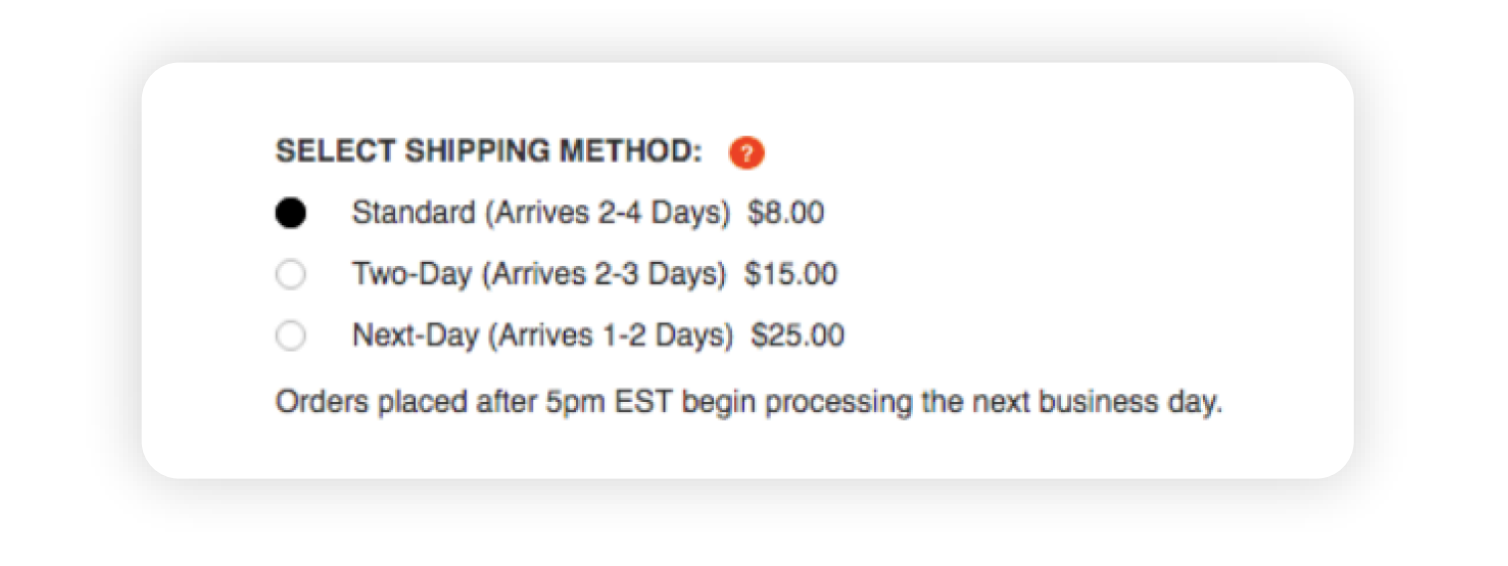
Sephora manages to tell us literally everything and nothing all at once. This is a perfect example of more information not necessarily being helpful.
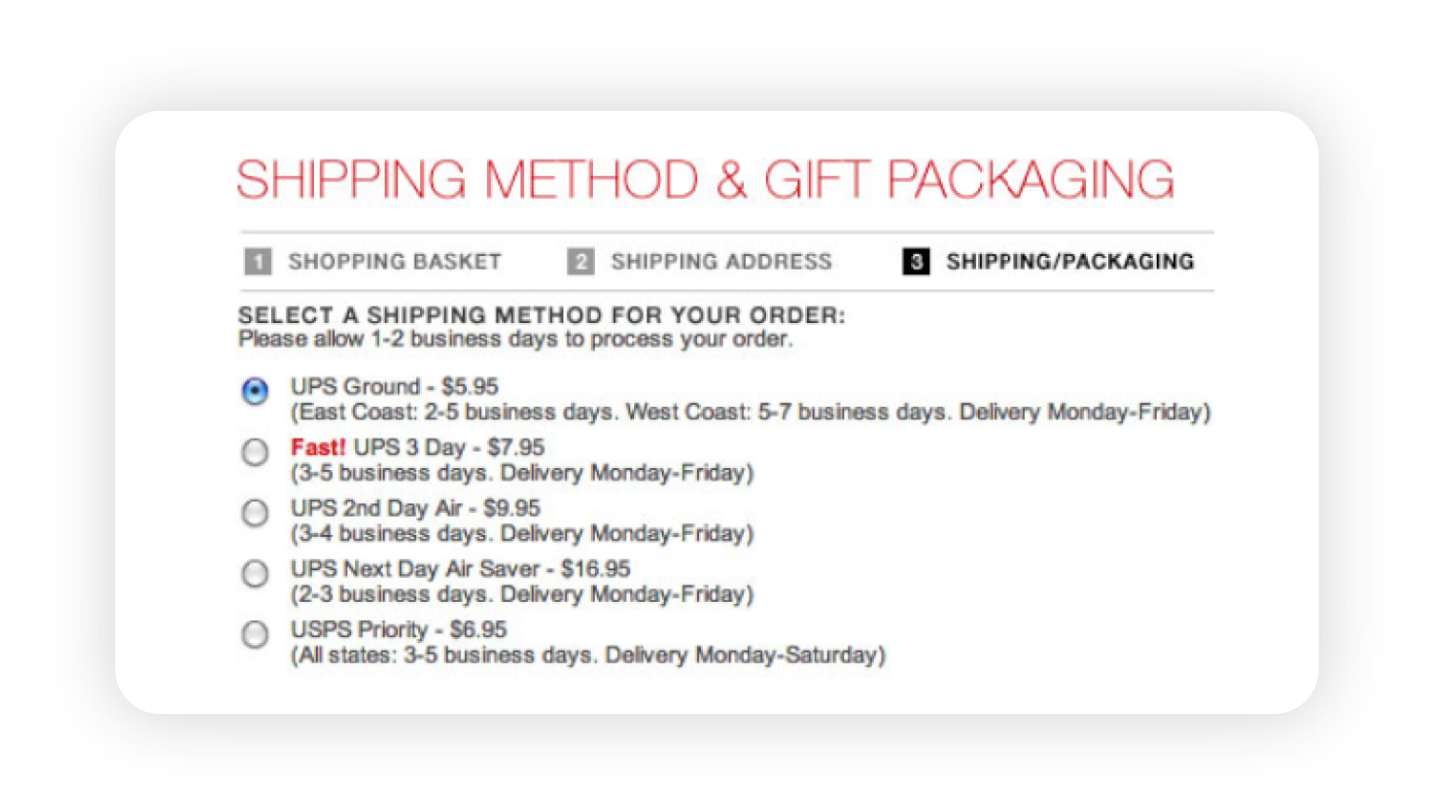
Walmart fares better than Sephora with their estimated delivery dates. They avoid clutter, opting for concise, clearly worded icons. This makes it very easy for date and price comparison. Without dates, the simple act of comparison would take far too much manual calculation from the customer.
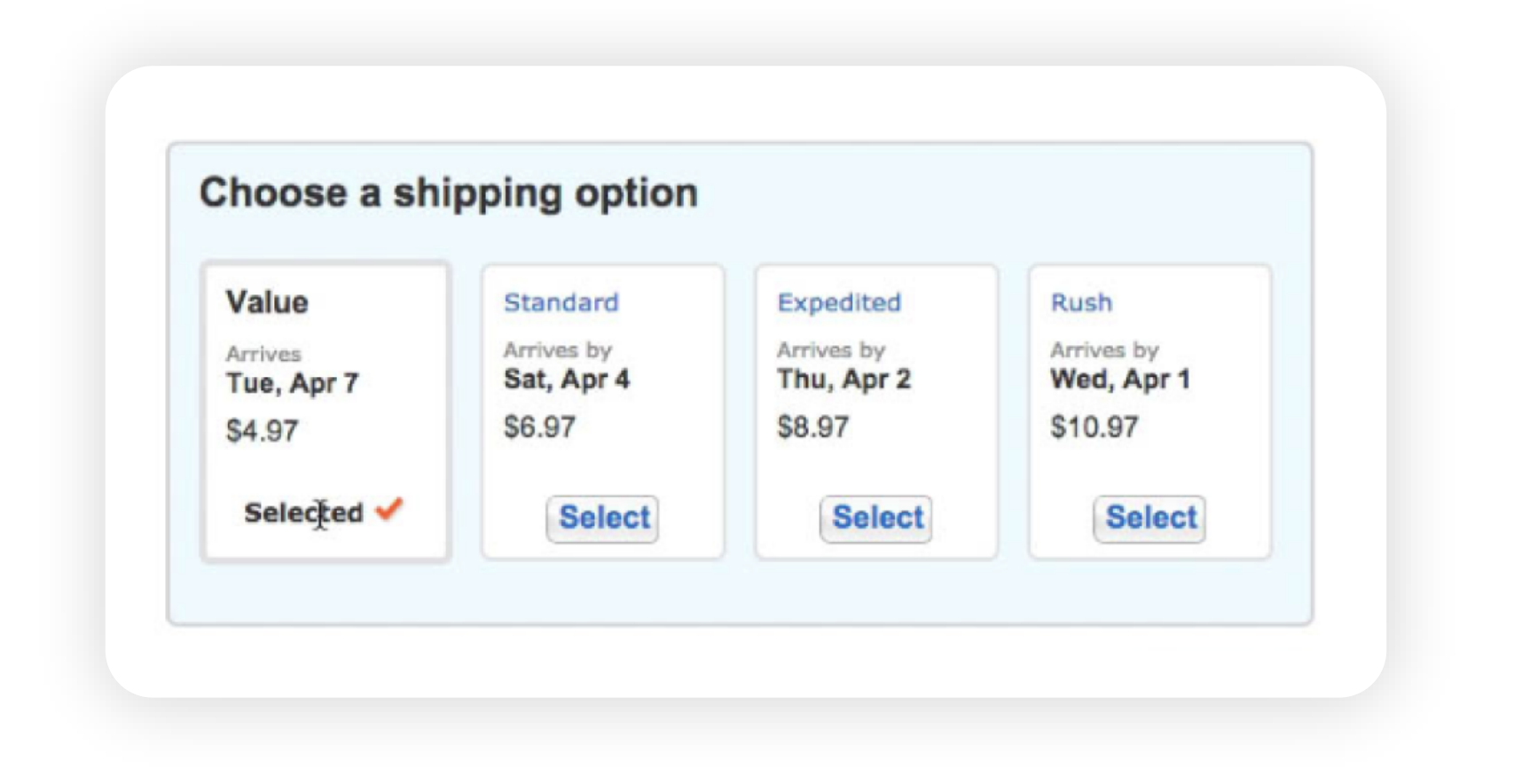
As the old phrase goes, perception is reality, so where exactly does perception fall into play here?
Studies have shown that consumers view delivery dates as a promise. Find a balance between padding the estimate with safety processing time and overpromising to the customer.
Overestimated time can lead to abandoned purchases while underestimating can create disappointment. Receiving a late shipment isn’t an automatic deal-breaker. By proactively notifying the customer and getting ahead of the issue the experience can be saved and expectations reset. In fact, letting your customers know when their orders are delayed will only help you increase customer loyalty and drive repeat sales. Building trust-based customer relationships is a must for a positive brand experience.
The best practice is to have delivery date calculations dynamically shift to reflect peak seasons, holidays, and weekends. The calculations should also consider the various processing times of different items. This includes longer periods for oversized or customized items, and shorter periods for readily available, “off the shelf” products.
These things matter to your customers, especially during the gift-giving seasons where being upfront and reasonable is most important! You can improve the post-purchase experience and drive brand awareness by being straightforward about the shipping process and any issues you encounter along the way.
In contrast, customers look at shipping speed as more of an estimate because of the built-in ambiguity. However, the price you pay for having fewer expectations to live up to is a dramatic reduction in conversion and sales! Luckily, you can influence purchase decisions by setting clear expectations.
Shipping cut-off times are a very helpful tool when used in conjunction with the delivery date estimator. In order for everything to be totally accurate, you need to know when the shipment will actually begin its journey. The difference between a package leaving today or tomorrow could be large, especially if tomorrow is a Saturday.
They can also be very efficient in driving a sense of urgency in online customers, especially when presented in countdown form. Acting fast is a natural response when feeling as though time is slipping, which translates to online shopping behavior as well. Undecided customers can be influenced when told they’d have to wait through an extra weekend. Sometimes this can be the only motivation needed to change “I’ll come back later” to “buy now.”

Shipping cut-off times may seem simple, but there’s a lot going on behind the scenes to achieve accuracy. They need to take into account holidays, weekends, and other non-processing days. They must also accurately reflect when your warehouse stops processing each day to accurately estimate delivery dates. In all of these scenarios, they also have to know when the process will resume.
Of course, as with anything, how you present the information is just as important as the information itself. Let’s analyze some examples from popular retailers.
👇❌ This is a poorly executed example of using shipping cut-off times. While the information is there, it requires too much manual calculation to be done by the customer. What time zone are they in, and how is the difference calculated? What time is it right now? Ahhh!
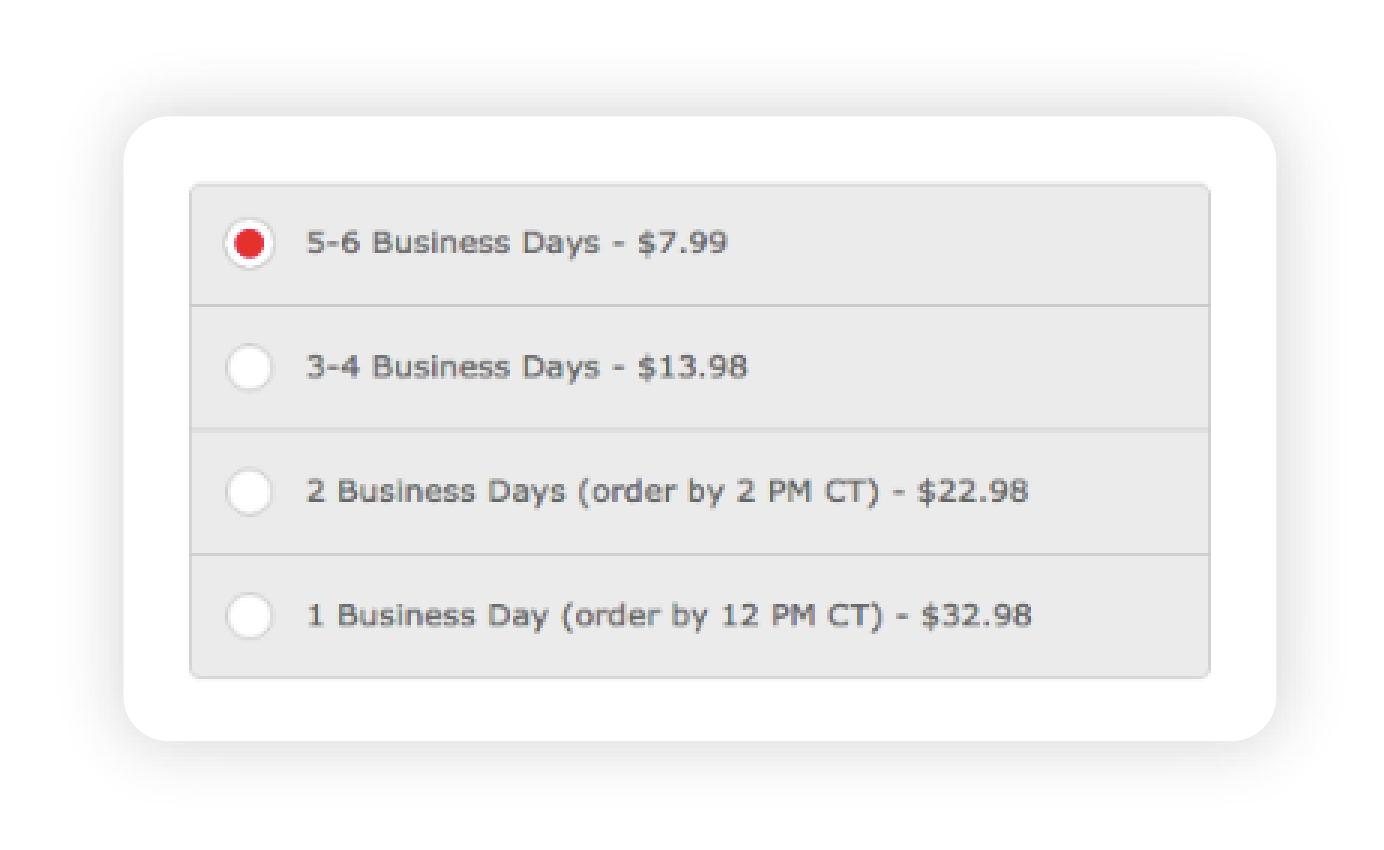
👇✅ This example creates a perfect pre-purchase experience by pairing a countdown cut-off time with the estimated delivery date. It’s dynamic and only displays a time limit that is relevant for the specific customer at hand. If they’d like to choose the Next Day Air service for delivery on August 20th they have 43 minutes left.
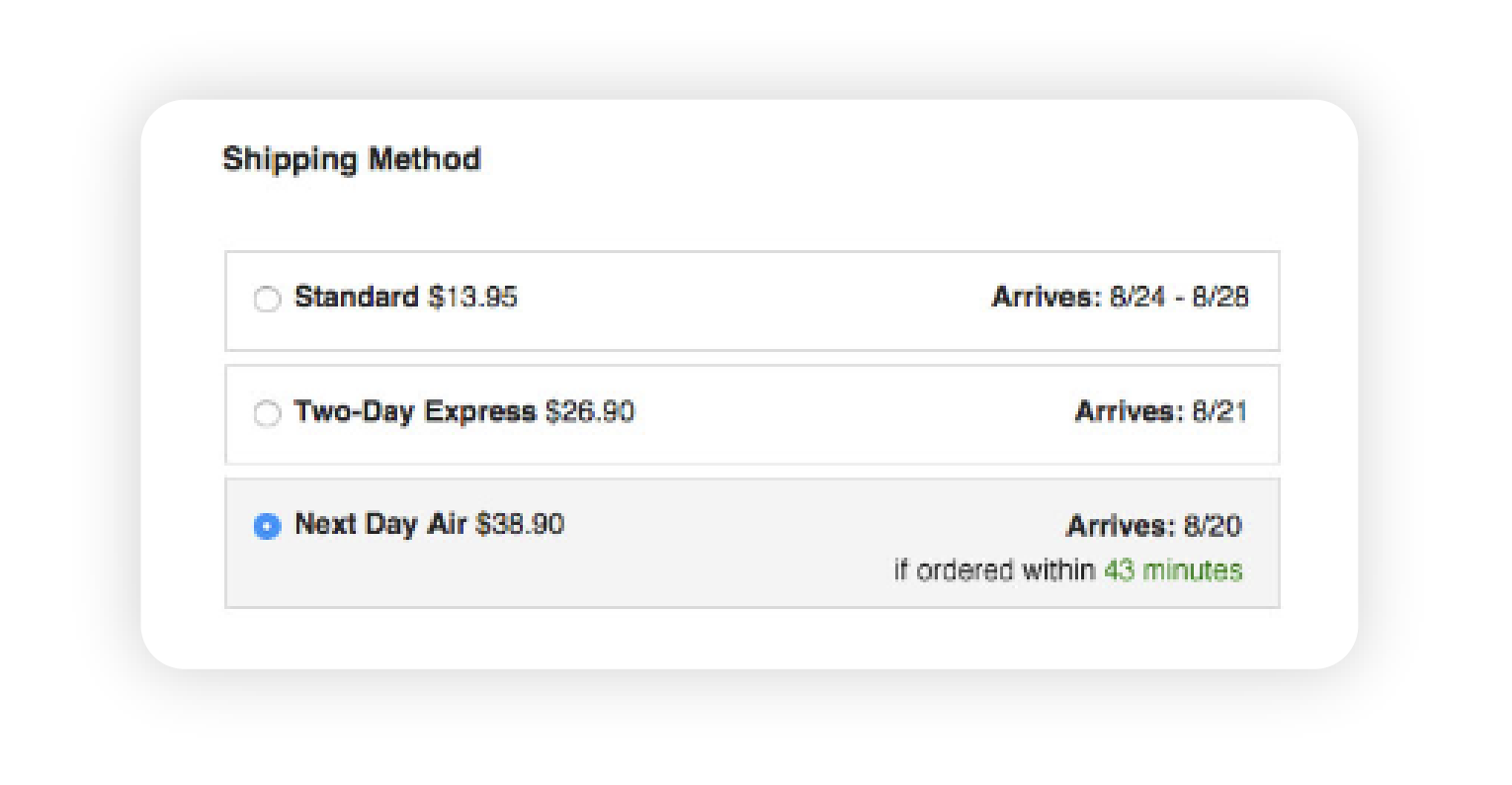
The “My Account” page is responsible for 64% of returning traffic, yet is sadly neglected by many eCommerce retailers. Optimize this section by turning it into a comprehensive information hub that re-engages with your customers at the right moment. This will ensure a great experience for both new customers and existing customers, as well as a great opportunity for post-purchase marketing to build customer loyalty and increase repeat purchases.
The average U.S consumer’s post-purchase behavior includes tracking their order 3.9 times. Studies have shown this is the time when they most want to engage with you. Why do American shoppers feel the need to check their orders so frequently?
For one, shipping times in the U.S are considerably longer than in places such as Europe. Also, the ongoing shipping war between Amazon and Walmart has considerably raised the expectations of the U.S consumer. Despite these expectations, most retailers are struggling to keep up. In fact, only 39% of packages in the U.S are delivered within two days, down from last year!
Currently, around 56% of sites fail to integrate all eCommerce order tracking information and events within their site. They let users find the important details about their shipment on a third party or carrier site instead.
This offers a subpar user experience and is a big miss for retailers when it comes to re-engagement. In many instances, the carrier’s site only has package information and the retailer’s site only has order details. The customer is forced to bounce back and forth to get everything they’re looking for.
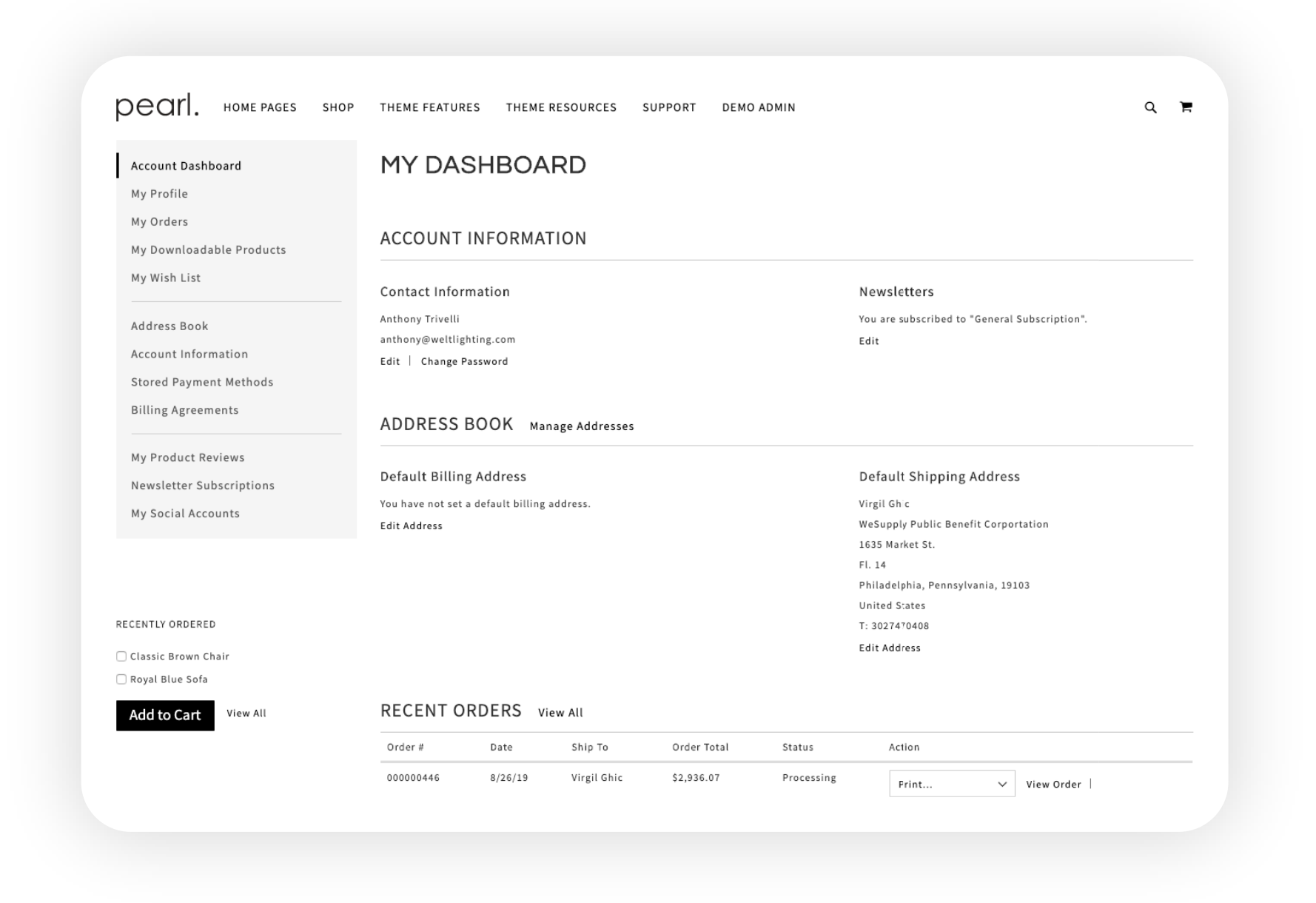
A good My Account section serves as a hub of information and is easily actionable. Here a user can access important order details, manage a wishlist, tweak their profile, set account information, and reorder items. Document the customer’s purchase history by displaying all orders associated with their email address.
Two of the most crucial elements of the “My Account” section are the order details and tracking pages.
We can’t emphasize how important a cohesive order details page is for optimizing your website’s customer experience. For starters this lets you avoid three big post-purchase stress points:
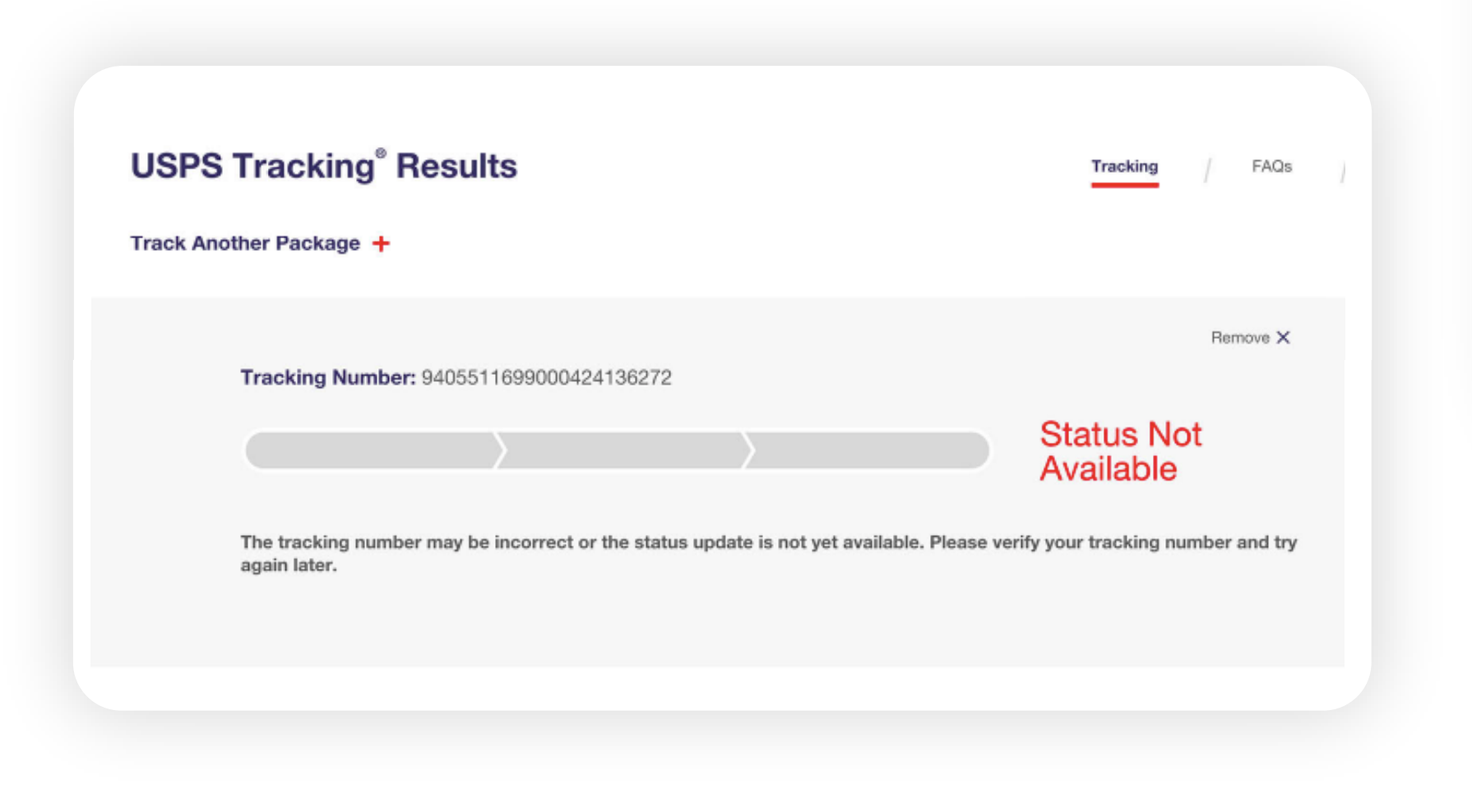
Shipping Information Gap: “Status not available” messages appear when users attempt to track their package before the carrier picks it up. This usually leads to “where’s my order” phone calls that can swamp your customer service team. Keeping the post-purchase customer experience in-house solves this issue by communicating the processing stage.
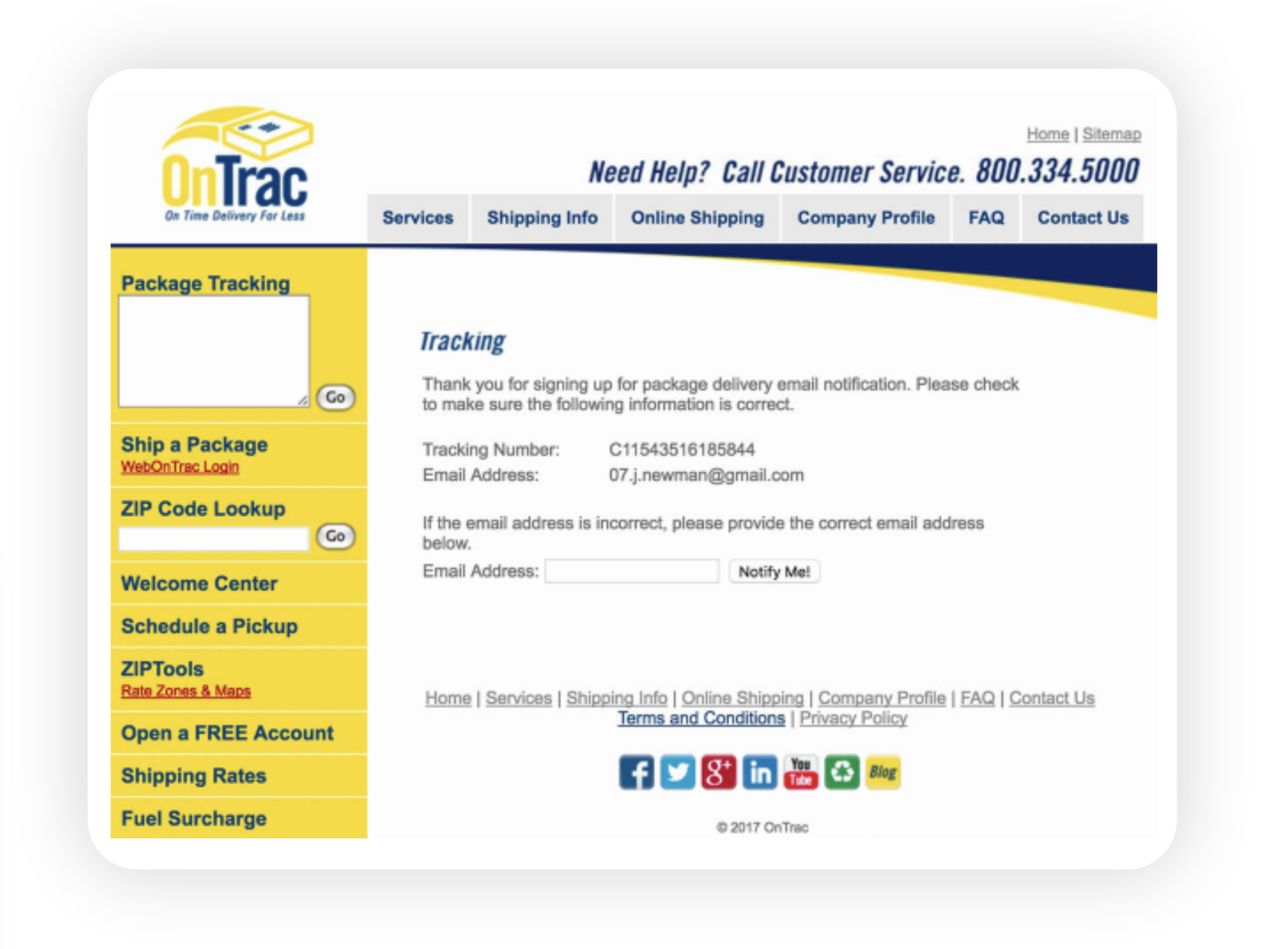
Incoherent User Experience: Toggling between sites can be problematic for mobile users. This is a bigger issue with each passing year as post-purchase engagement on mobile devices increases exponentially. Many order tracking apps for small businesses offer only the bare minimum functionality.
This page leaves users with an unclear feeling of what to do next. Working backward seems like the most logical answer but why isn’t there something directing them to the information they want? Tech-savvy consumers may be able to navigate themselves, but most will resort to calling your customer support team.
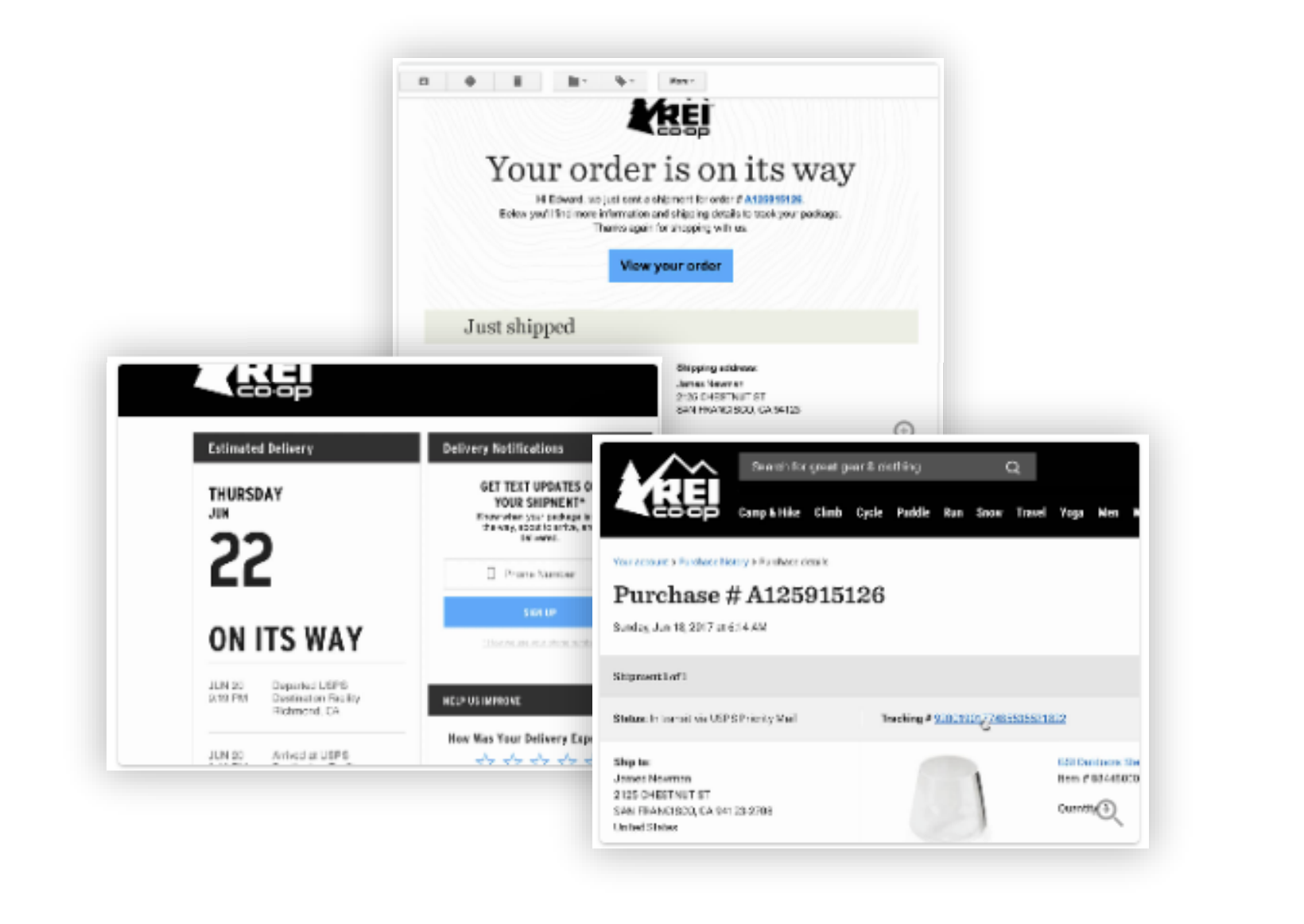
Information Disconnect: Speaking of site hopping gone wrong, the above image illustrates how frustrating only receiving fragments of information can be. Here the order confirmation sends the user to a details page that fails to give the delivery date. The user must visit a third-party site for the delivery date. This undermines each individual page’s usefulness as the user will constantly be needing to go back and forth.
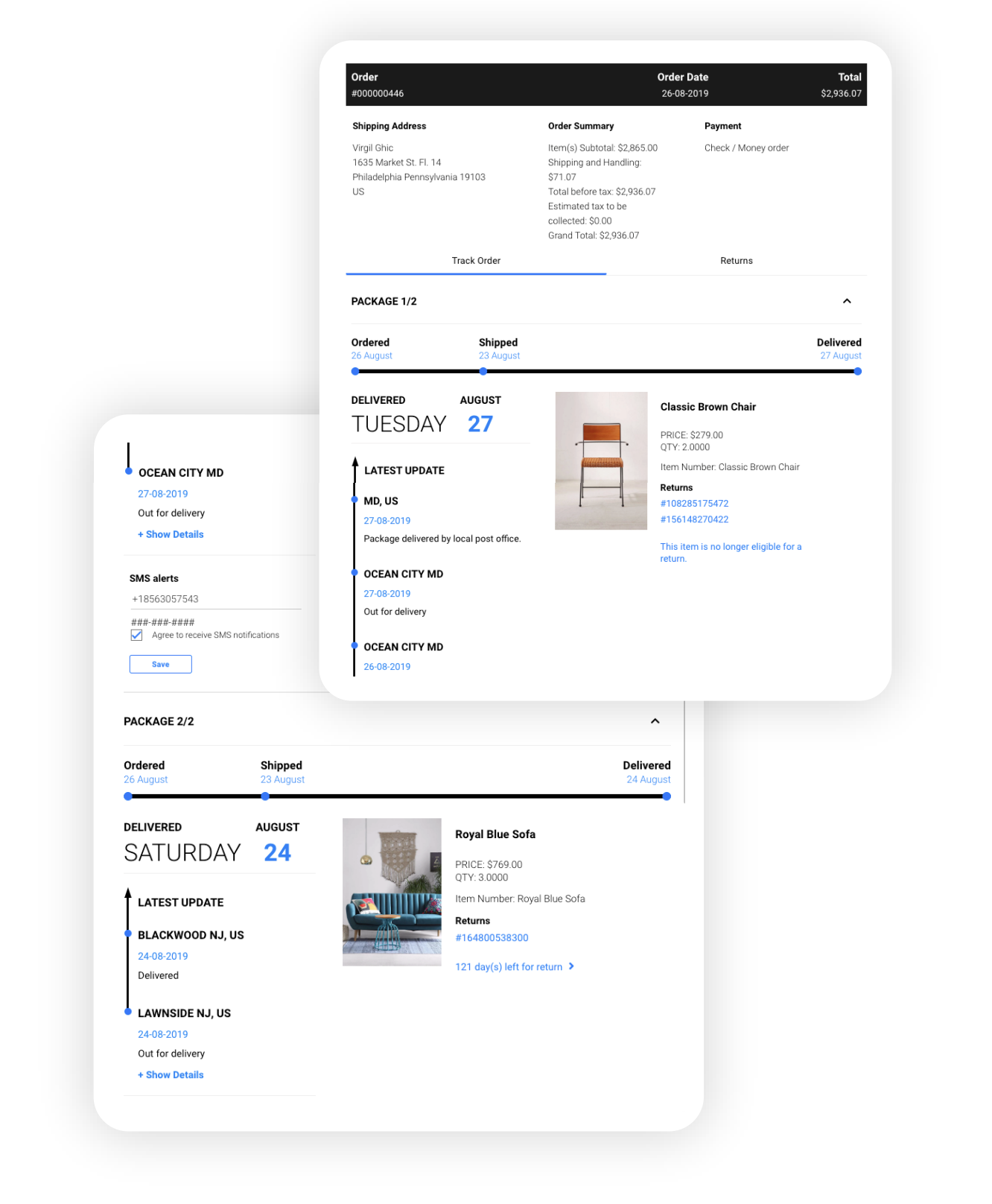
As stated earlier, a good Order Detail page should contain all relevant information a customer would want while being easily actionable. Let’s break down what makes the above example so successful where the previous images fell short.
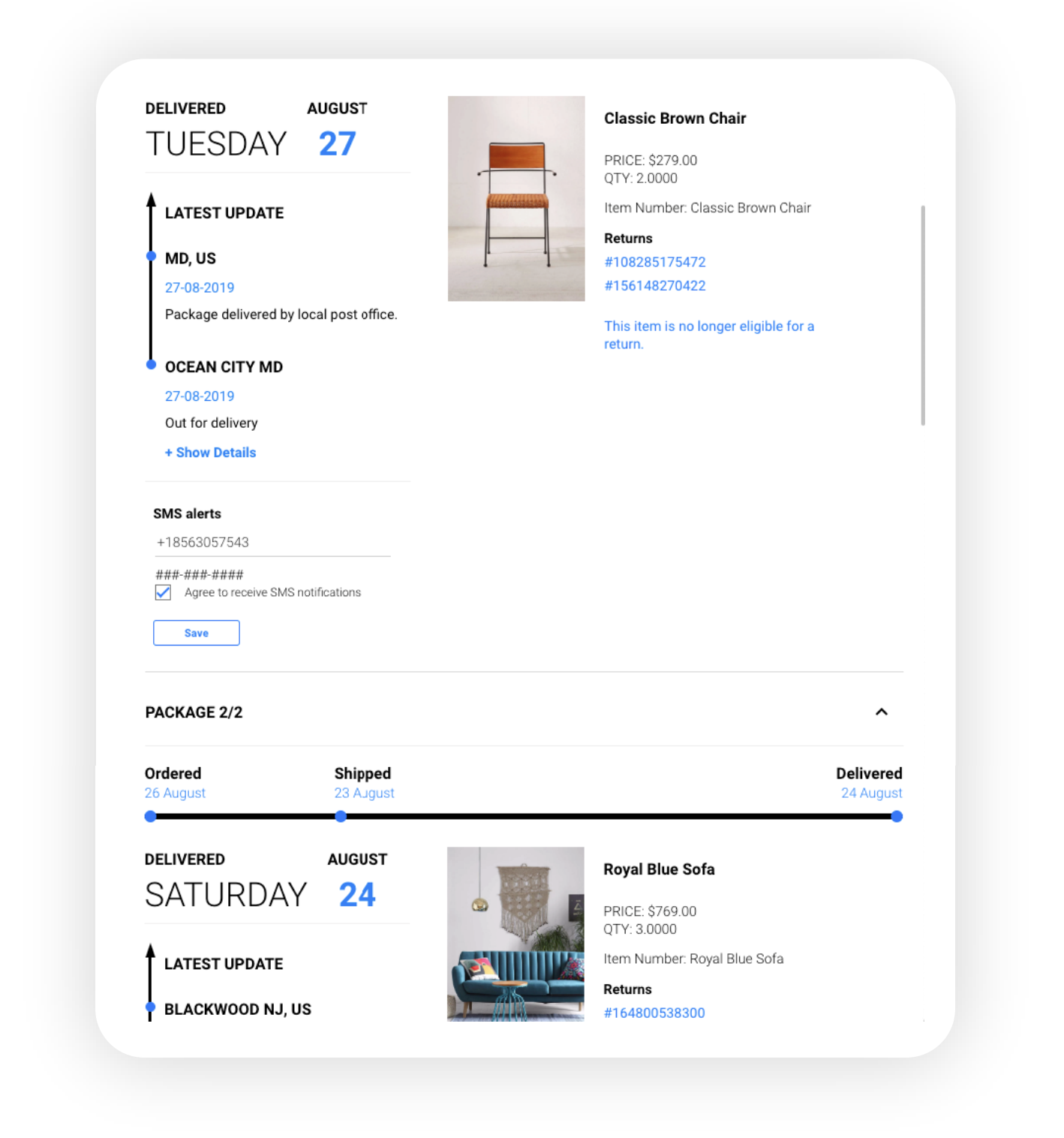
Order Information: Order status, item, price, and quantity are all clearly displayed. Items shipped in separate packages are specifically noted and properly explained. The customer knows what to expect in each box and when to expect it.
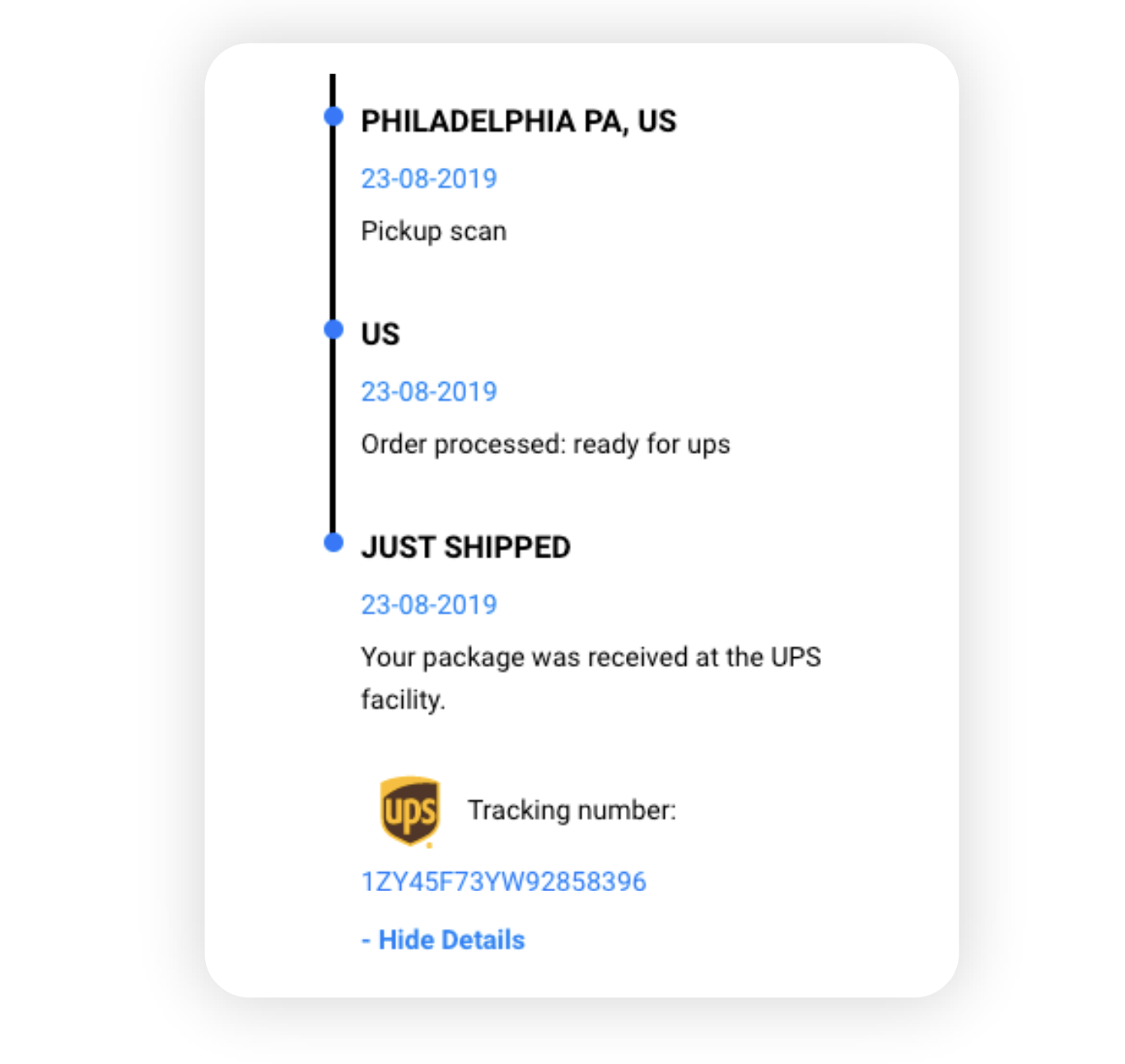
Shipment Information: Go beyond the standard tracking number on your order detail page. Offer customers a step-by-step event log through the shipping process to ease anxieties and mitigate calls. Let the customer know that you’re processing the order and there’s nothing to worry about. The experience is seamless since there’s no gap in tracking, ultimately helping you get more customers, drive more revenue growth and improve the post-purchase journey.
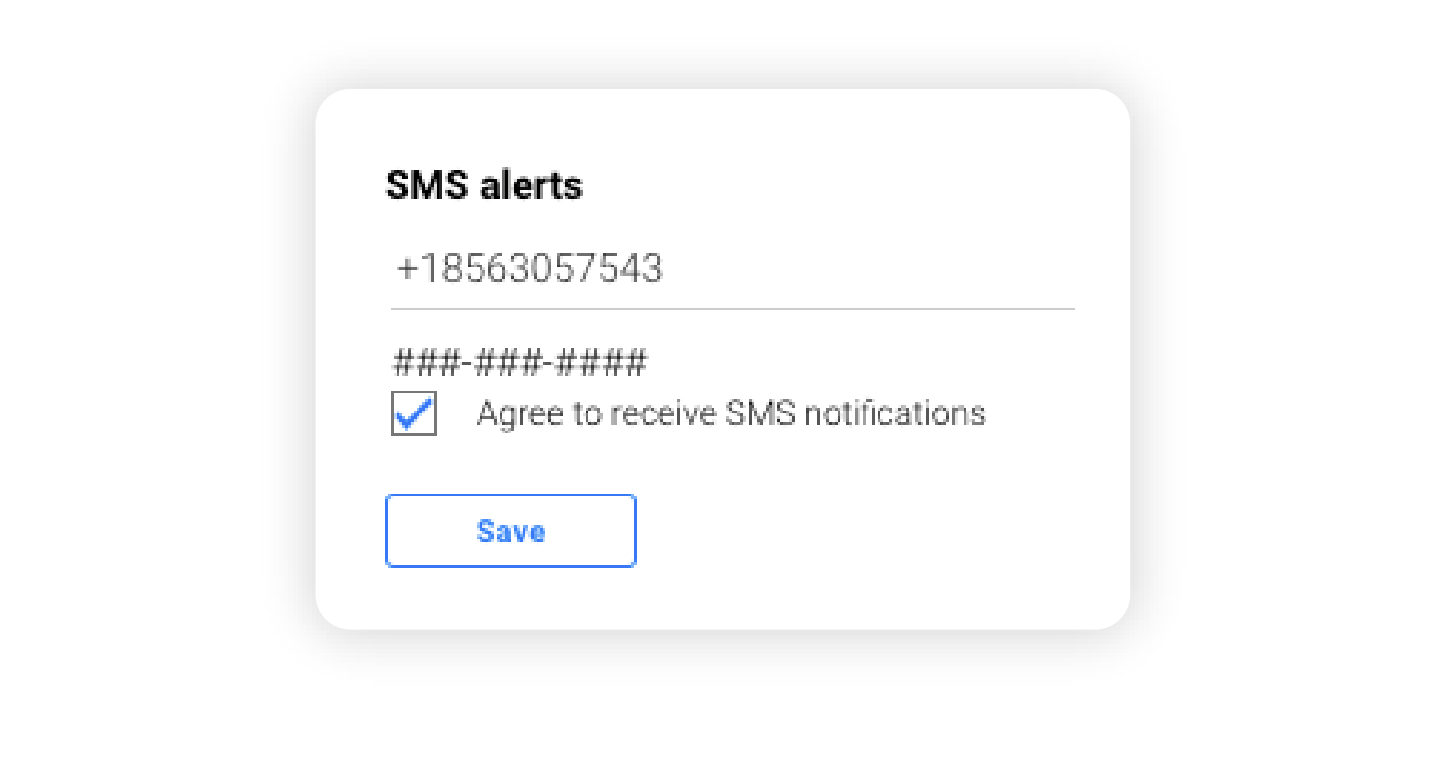
Notification Opt-In: This allows customers to opt-in for direct SMS notifications about their package. Transactional SMS messages contain valuable information from the carrier regarding the shipment. This can include issues faced in transit (exception status), and delivery updates to aid package theft prevention. Customers can choose to opt-in for one package while opting out for another if their order is shipped in multiple boxes.
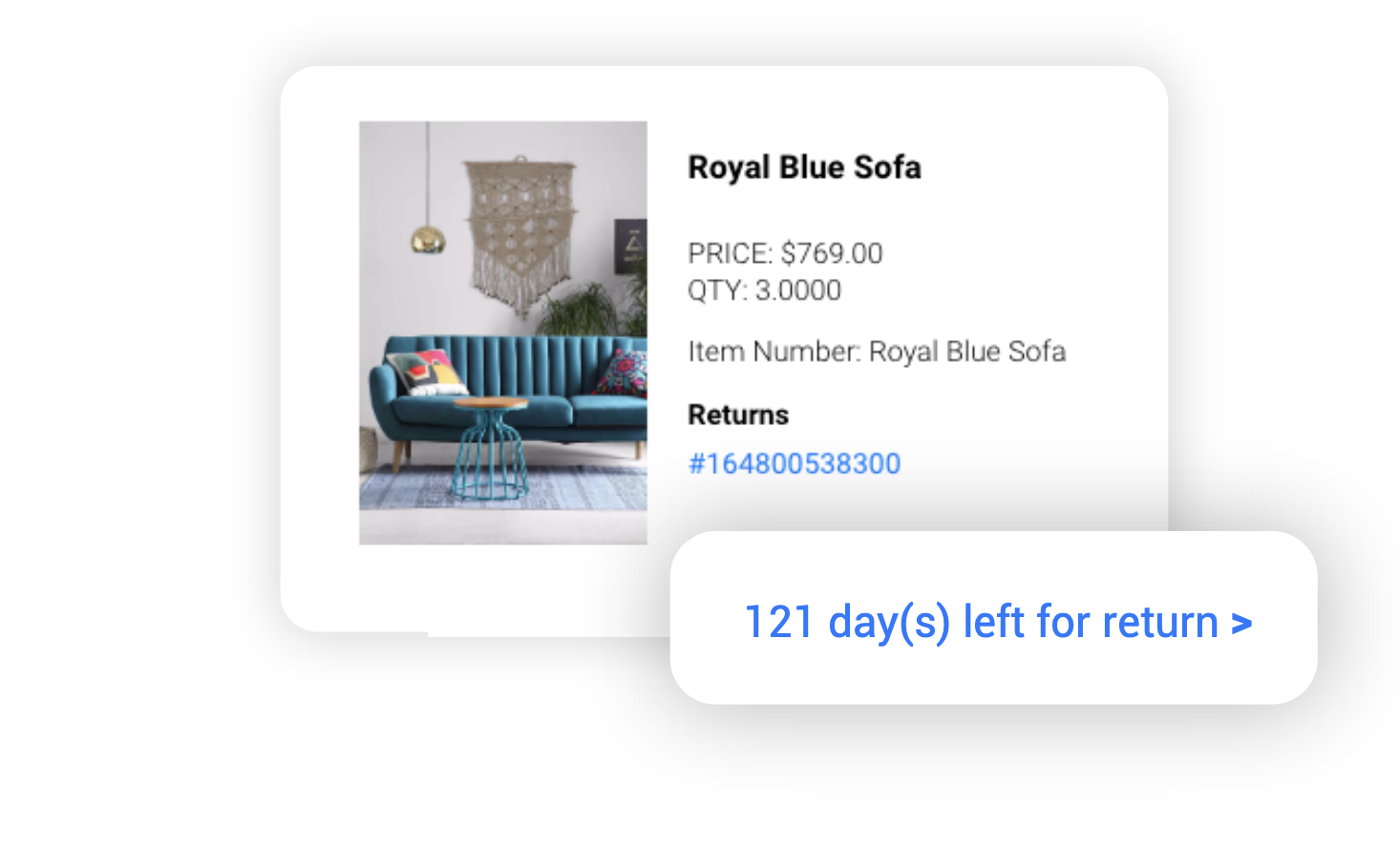
Returns Management: Mitigate bad returns experiences through clarity, self-service, and flexibility. 54% of eCommerce websites have significant UX performance issues when it comes to returns. By making returns easily actionable straight from the Order Detail page, you put the power into the hands of the customer. Customers can follow the easy steps to generate a return label after seeing how many days they have left. Using WeSupply, you can enable your customers to choose a full refund or generate instant credit coupons to encourage them to proceed with their next purchase, increasing the number of returning customers.

Omnichannel Order Tracking: Don’t forget about orders placed through a guest account or an in-store POS system. Make the order detail page available to all of your customers by tying each one to an email address. This will help you get more happy customers while improving your brand’s reputation.
The tracking page is a quick glance at several elements we’ve already discussed in the order detail page section. It provides a big opportunity for you to re-engage and upsell to your customers.
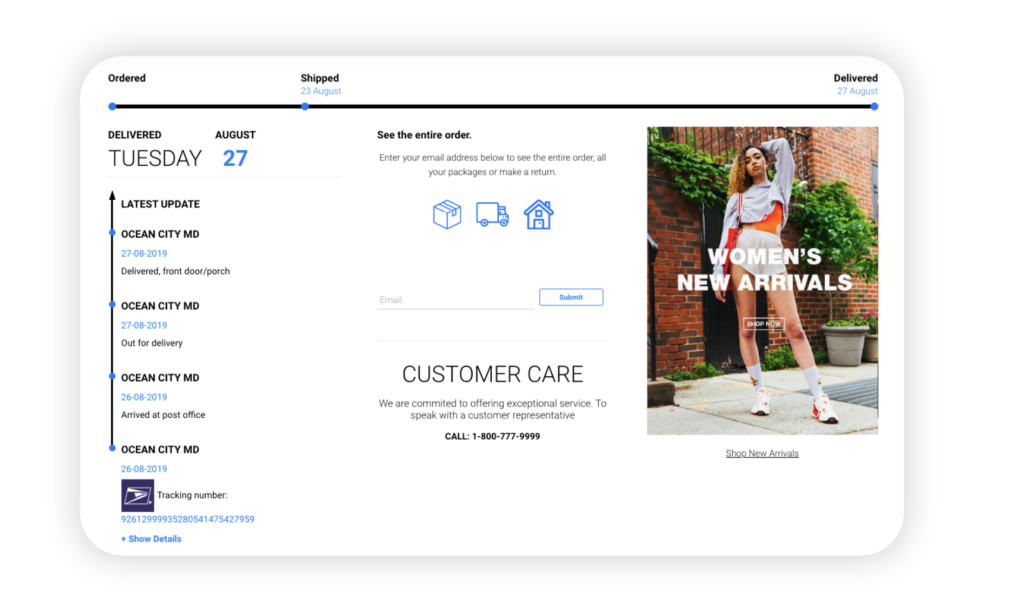
Tracking Details: First and foremost the Tracking page should have the tracking information. Provide the tracking number and step-by-step event log for the package to keep shipping anxieties at bay.

Delivery Date Estimator: The best Tracking pages follow our earlier concept and succeed in setting expectations during the post-purchase customer experience. Including a progress bar will show the customer what stage the order is in, from processing to delivery.
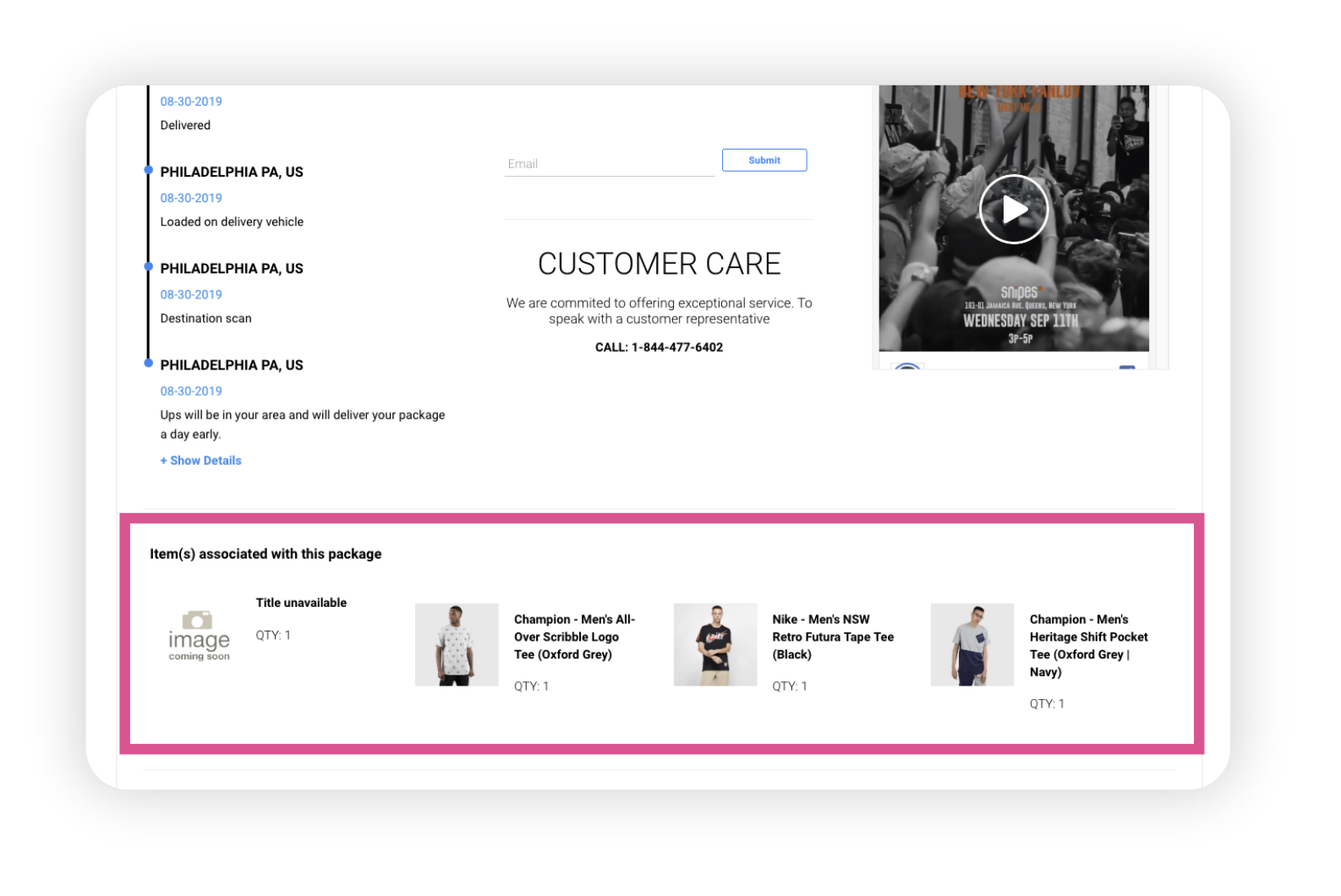
What’s in the Box?: Situations where the customer has one order with multiple tracking numbers can be confusing. Eliminate extra steps and make it clear which item is linked to each tracking number.
Post-Purchase Upsells: Use this space to show customers products, promotions, or campaigns they’re sure to love. Base recommendations on their order history and focus on enhancing the experience of the product they’ve already purchased. 53% of customers say that thoughtful and personal experiences are even more important than discounts, so tailor it accordingly.
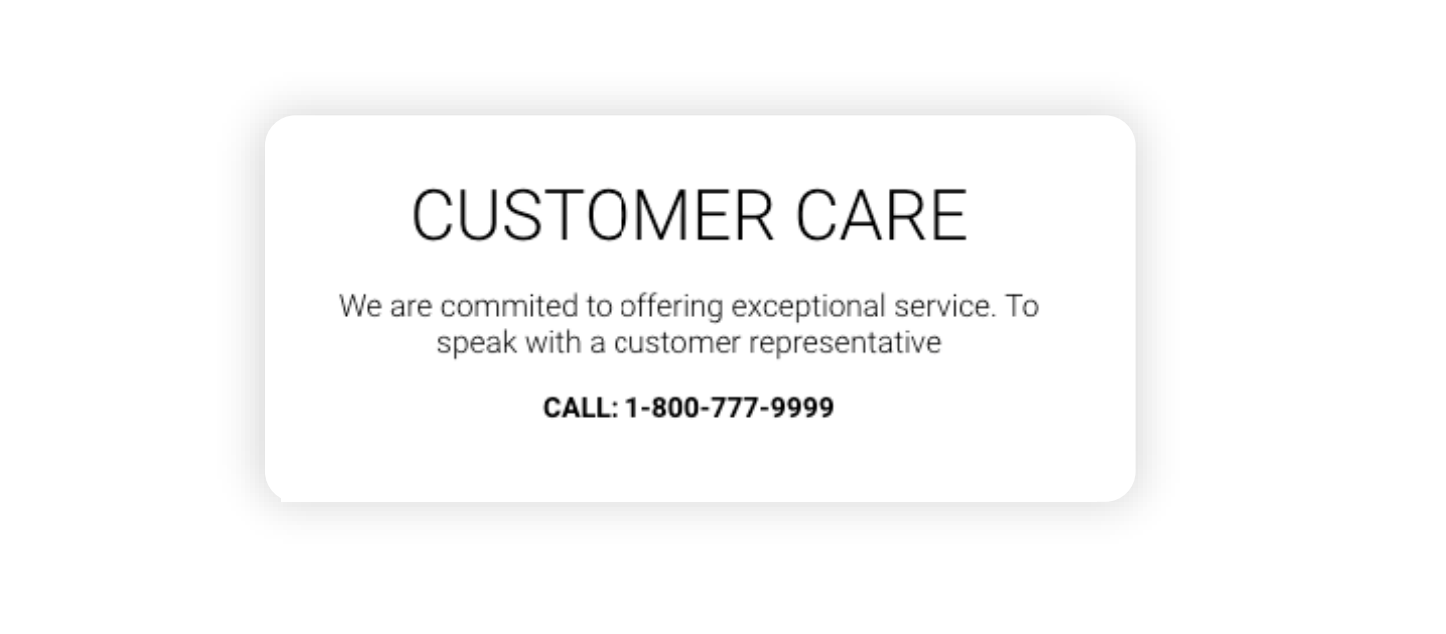
Link to Post Purchase Customer Support: Be there for your customers. The perfect post-purchase experience will reduce calls to the support center, but sometimes they’re unavoidable. Dedicate space on the tracking page to let users know you’re available to help them through complex issues.
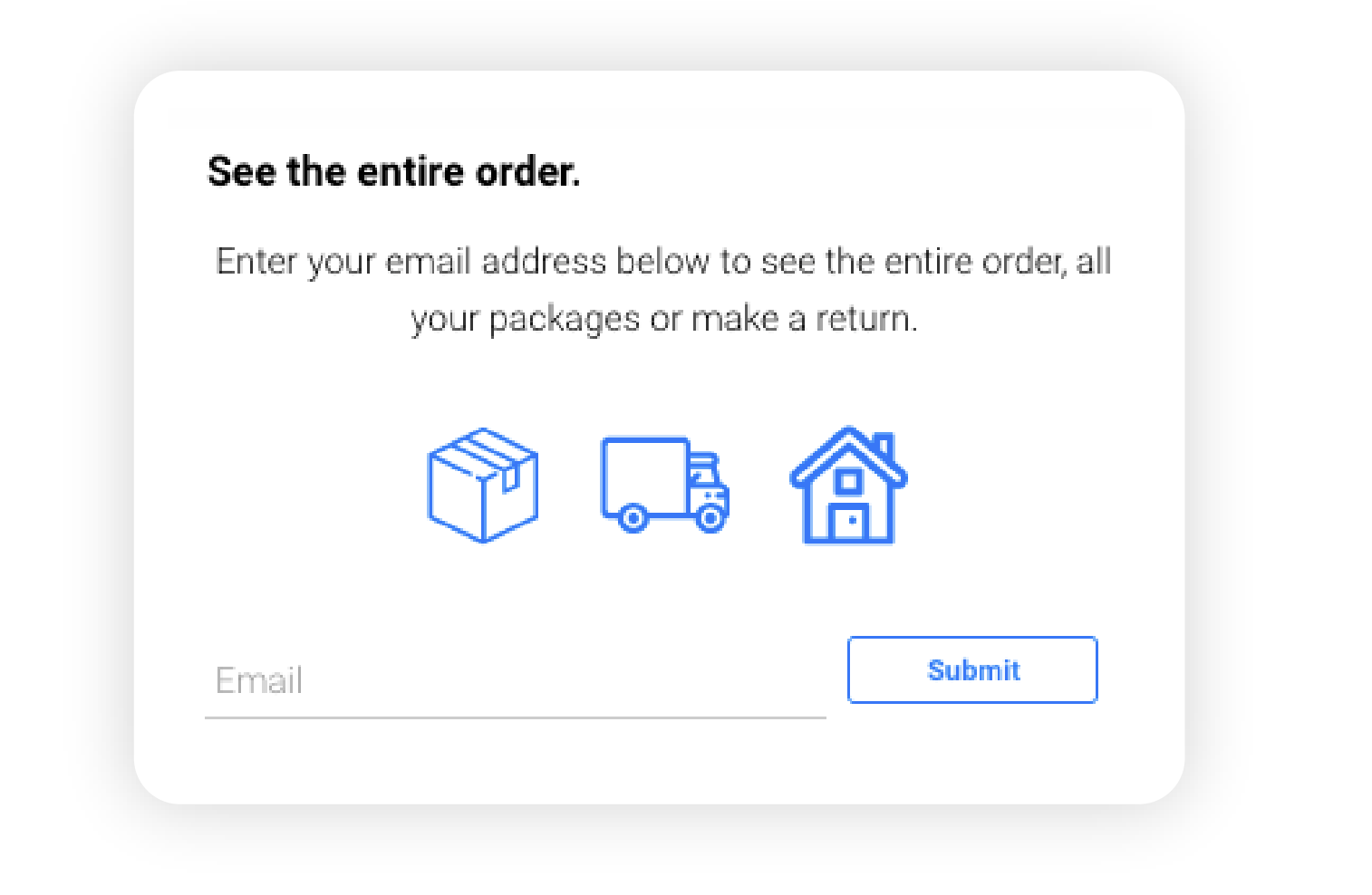
Link to Order Detail Page: Enable customers to handle issues on their own by linking to the Order Detail page.
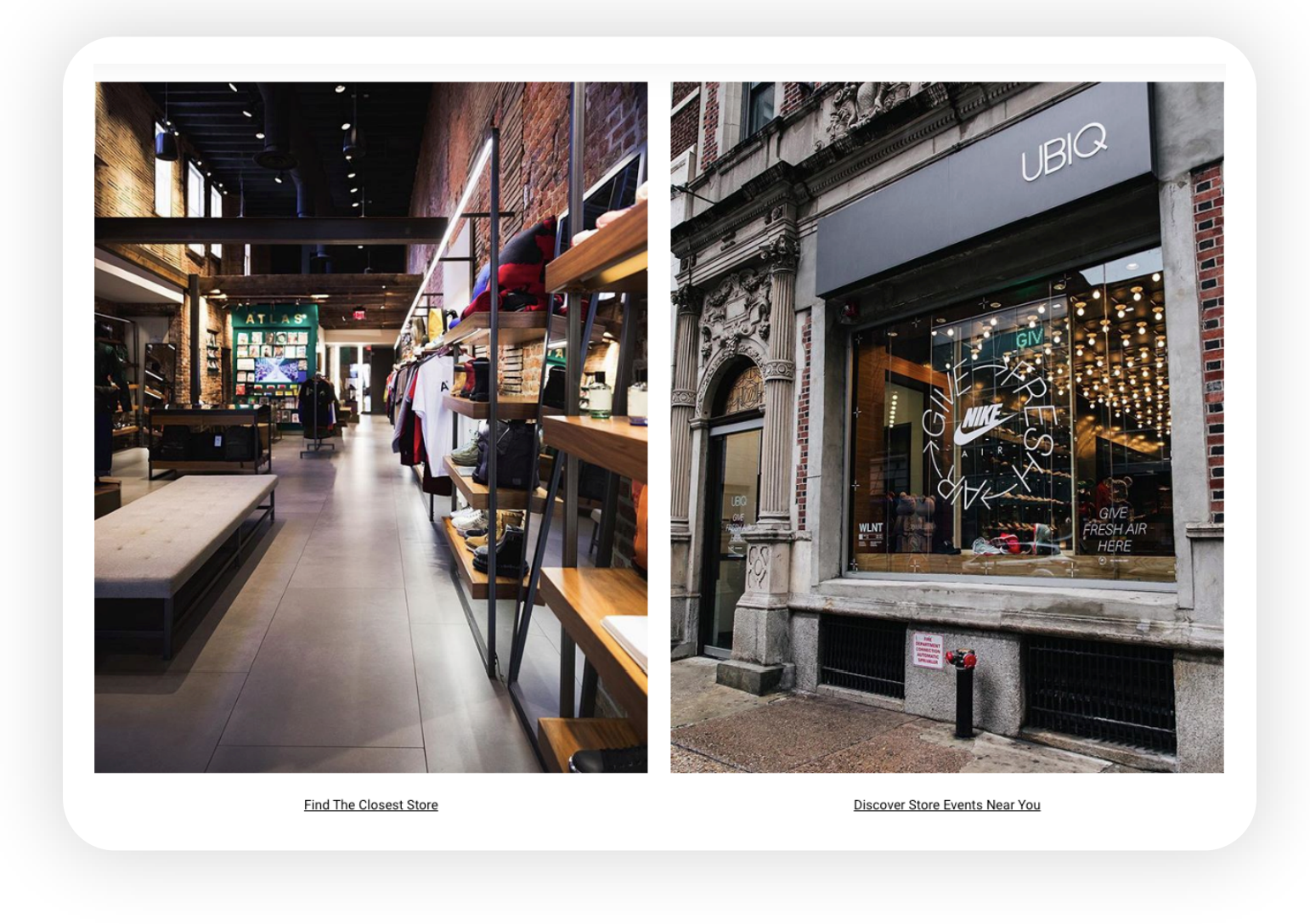
Branded Experience: Maintain cohesion by matching the custom tracking page to your site, keeping the same voice and feel throughout. Sending users to a third-party site removes them from the full experience of your brand.
A key element in re-engaging with your customers is proactive notifications. Recently, 33% of consumers said they wouldn’t return to retailers that didn’t send relevant follow-ups. Whether we’re talking about first-time customers or existing customers, post-purchase notifications are key for customer retention.
Online shoppers’ expectations have grown considerably over the last few years. It’s no longer acceptable to hand a customer a tracking number and send them on their way. Post-purchase dissonance, or buyer’s remorse, is experienced when a brand fails to properly communicate with customers after a sale.
“Overwhelming customers” is the most common reason listed by retailers when asked why they aren’t offering proactive notifications. However, a staggering 83% of customers say they expect regular communication about their purchases. Only 8% say that they’re receiving too many notifications. Keep a link to opt in/out of these messages in a convenient place to avoid alienating that 8%.
The two most common methods of proactive post-purchase messages are through SMS (text message) and email. Both are effective but the most important thing is to reach out to customers on their own terms. 60% of surveyed shoppers are likely to purchase again if they have the ability to choose their preferred method of communication. Let’s see what differentiates both, and how retailers can use them both simultaneously to great advantage!
Most marketing emails boast a 20-25% open rate, but transactional emails can claim an astounding 80-85%! This is because the customer has just made a purchase and is eager to hear from you regarding their order. It’s very important to put your best foot forward, maximizing the potential of your post-purchase email notifications. By communicating with the customer immediately after they’ve made a purchase, you provide validation and reassurance.
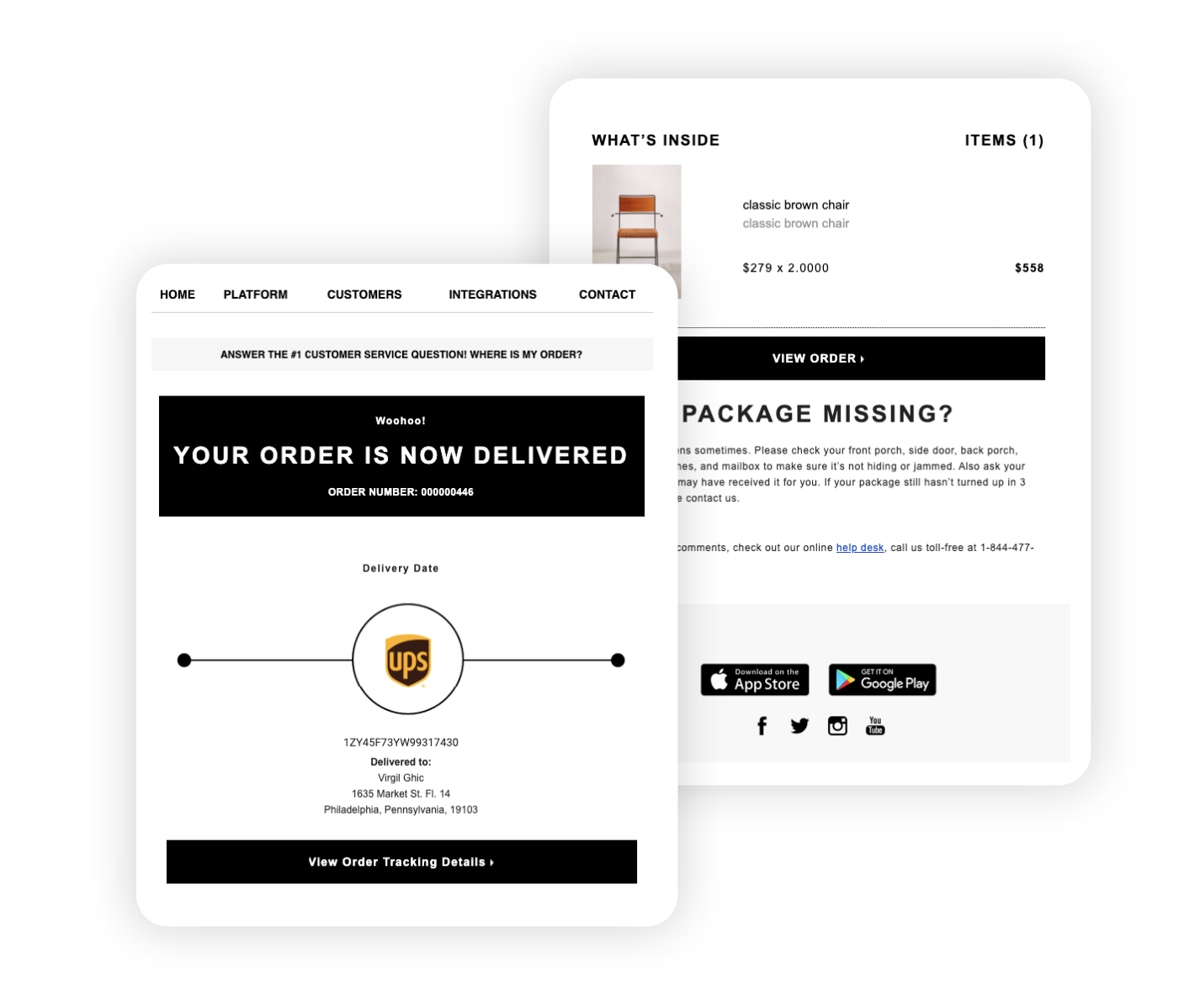
A well-constructed post-purchase email template contains several important elements. Let’s take a look at what you should include to maximize effectiveness:
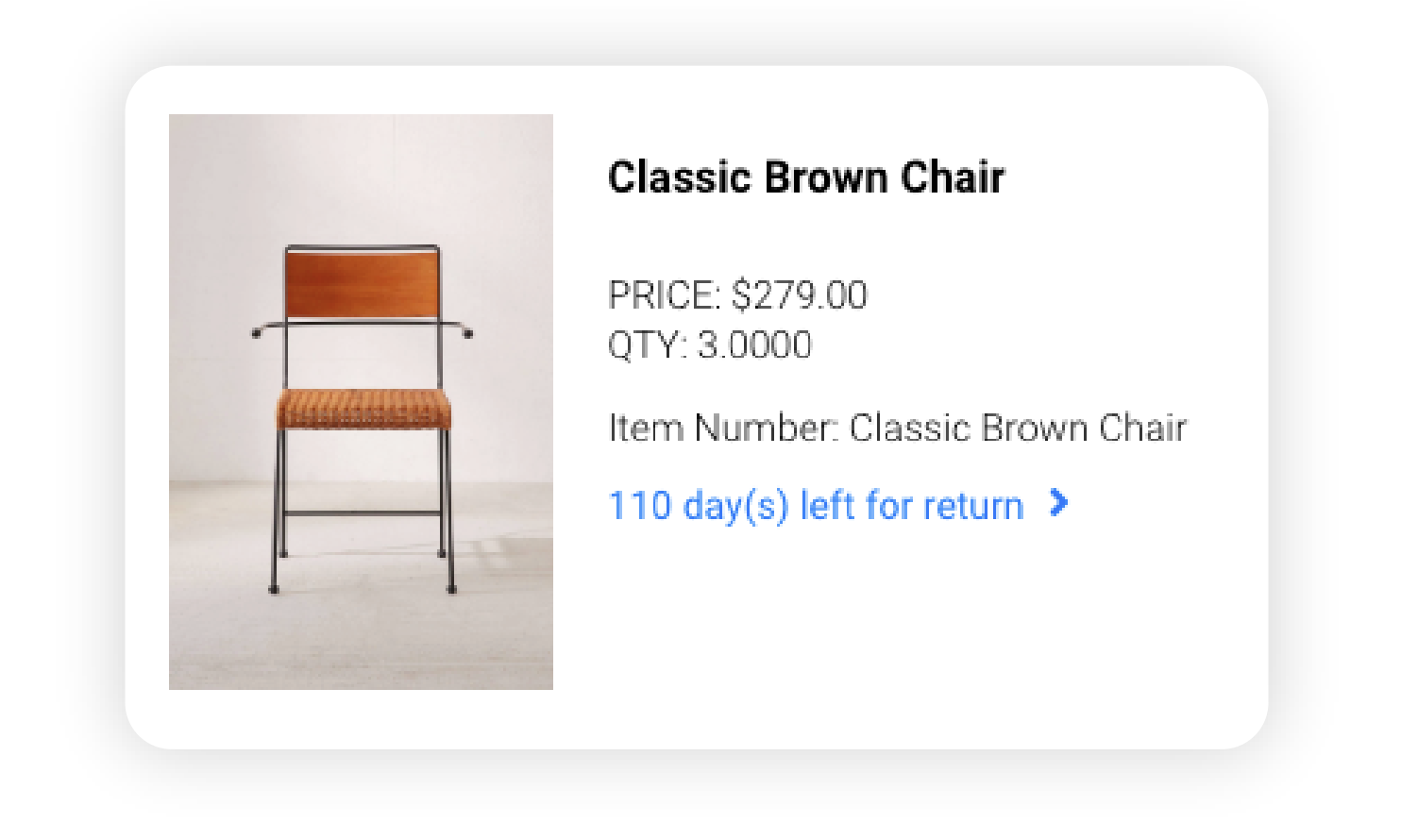
Item Level Details: Don’t make customers fish around for information. Having to switch back and forth between different sites can be problematic, especially for mobile users.
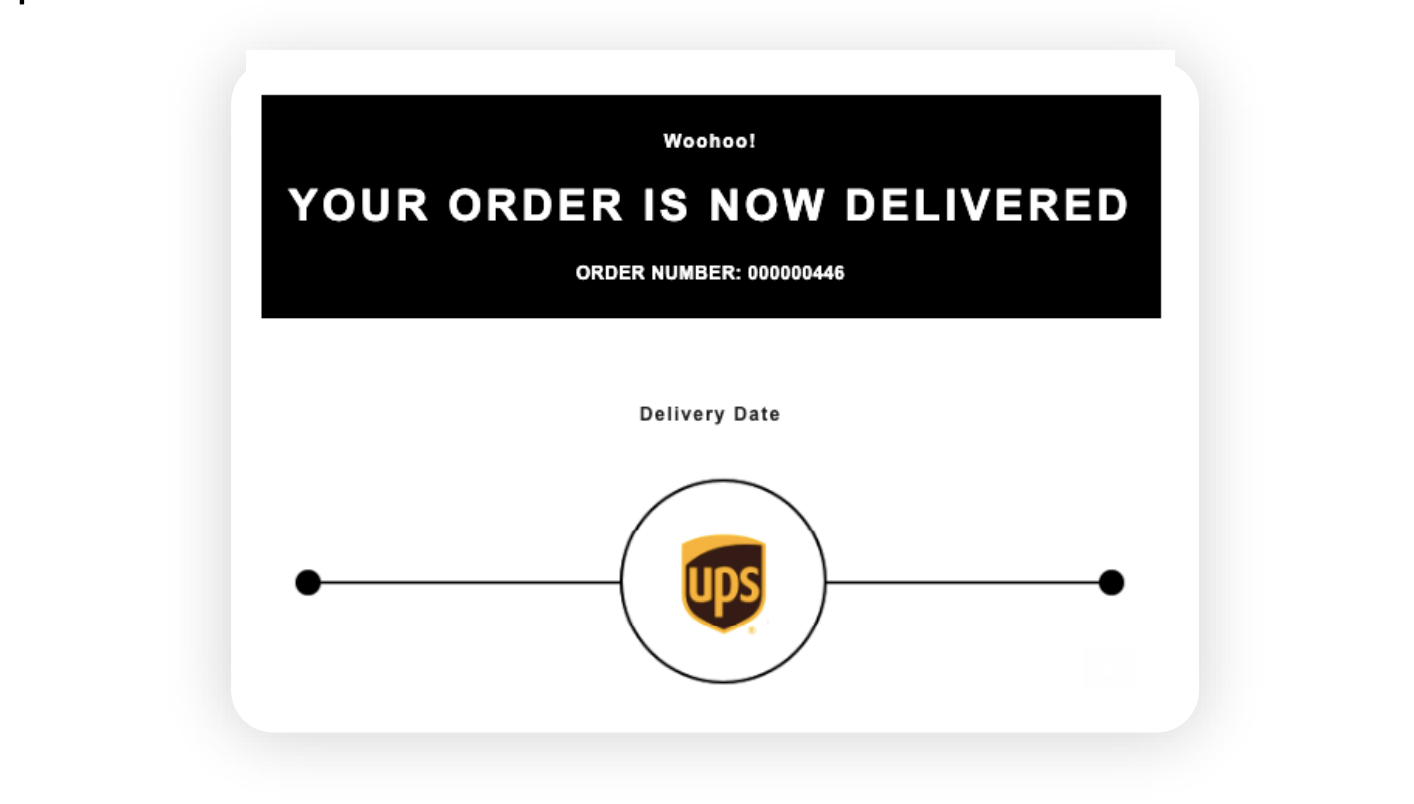
Estimated Delivery Date: Set expectations right from the first transactional email notification. Adding clear, accurate delivery dates can mitigate shipping anxieties and keep your customers happy.
Tracking Links: Use proactive notifications to drive customers to a retailer – branded tracking page with value-add content and personalized recommendations. Combining a well-executed tracking page with the excellent open rate of transactional emails provides a huge opportunity to increase sales.
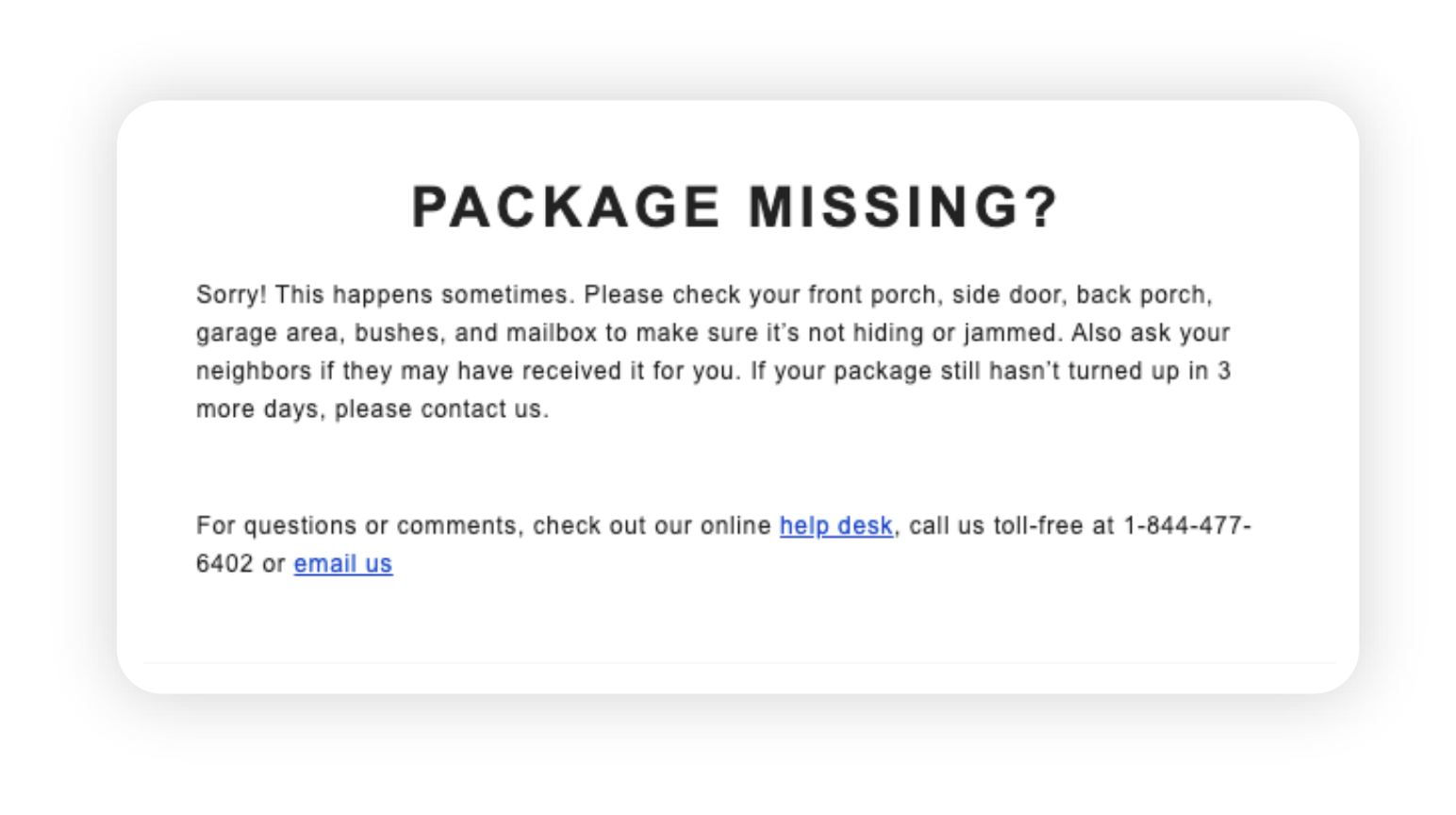
Link to Support: Self-service returns should never make customers feel like they’re on their own. Make it clear that your retail customer service team is readily available to help.
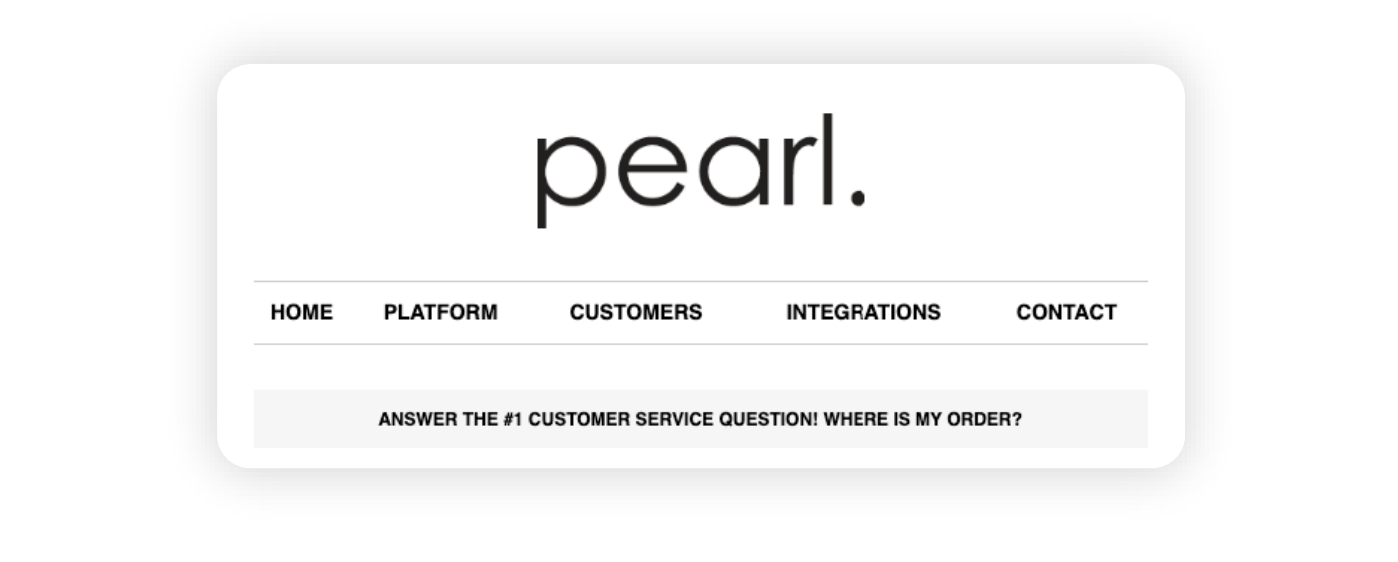
Branded Experience: Keep customers in a branded experience with no disconnects. By customizing the language and look of your emails you create a seamless flow between your website, notifications, and tracking page.
SMS notifications are the most effective way to communicate with customers, proven by their stunning 98% open rate. 90% of SMS messages are read within three minutes of delivery, while 95% are read within five!
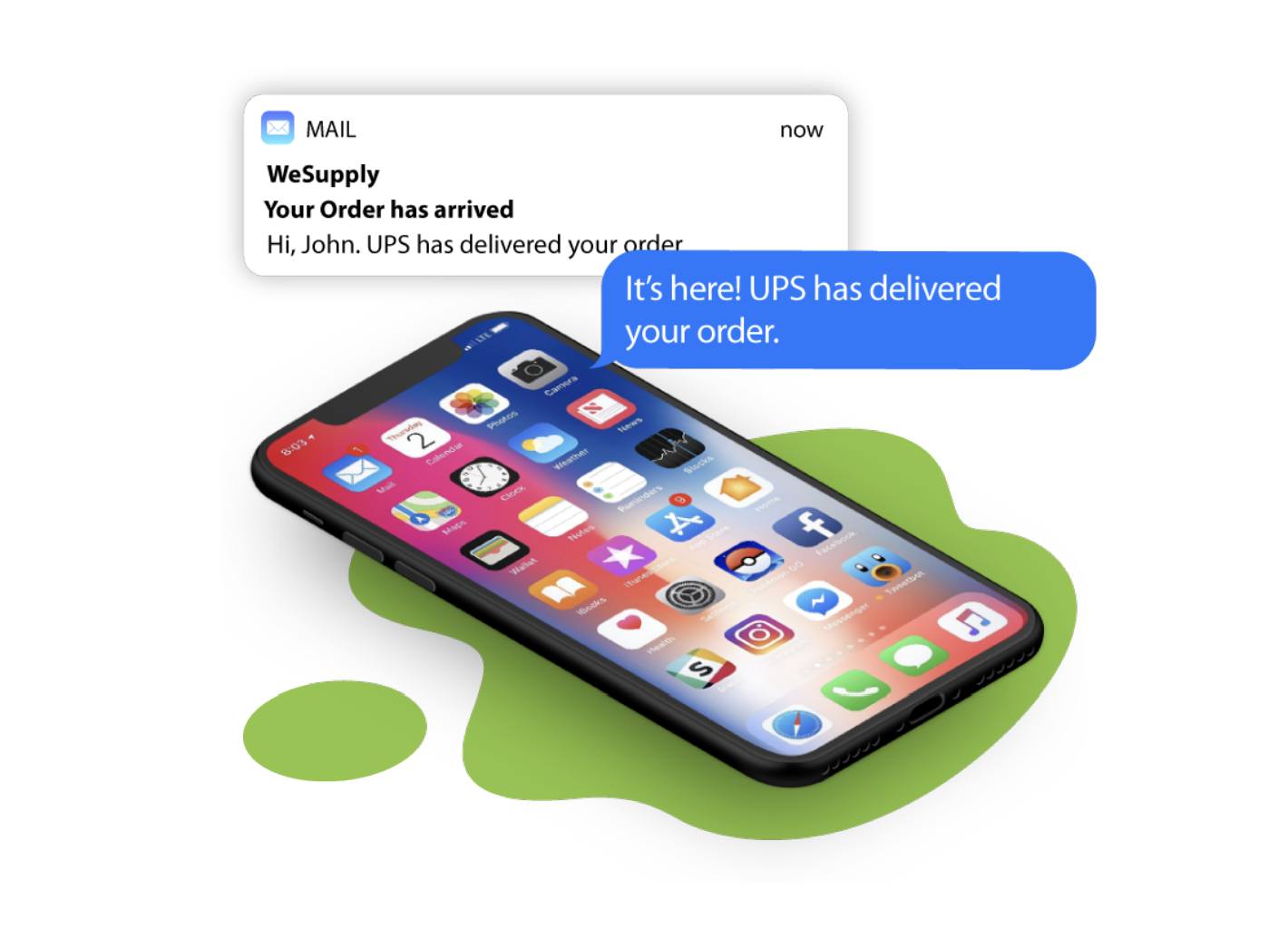
Helpful tips for managing SMS notifications:

Give customers more opportunities to opt-in/out and let them manage their notification preferences. Keeping your proactive notification system flexible empowers them to tailor their experience and maintain peace of mind. Allow customers to opt in during the order confirmation, as well as later on in the order detail page.

Although opting in and out is easy, it’s important to manage the flow of your eCommerce SMS templates. The best online retailers achieve a balance where their customers feel informed and empowered but never overwhelmed.
Ecommerce return rate statistics are generally much higher than those for brick & mortar stores. When it comes to in-store shopping, customers visit a physical location where they can interact with the items they want to purchase. On the other hand, returns are a necessary part of the eCommerce experience because goods are purchased without being physically seen or touched.
In today’s day and age, a good returns management software is absolutely necessary. When customers purchase items from online stores, they expect to be able to return the product if it doesn’t meet their expectations. This is something you need to consider when working on your post-purchase strategy for an improved customer journey.
Just how ingrained are returns into the eCommerce experience?
53%
of online shoppers have returned at least one eCommerce purchase in the last year.
11%
will not make a purchase if the return policy is not good enough.
29%
of users say returns are the most important reason for accessing their account.
7%
buy different variants of products with the preconceived intention of selecting one and returning the rest.
In fact, 95% of customers who are satisfied with their returns experience say they will shop again. This changes the question from “how do we avoid returns?” to “how do we satisfy customers and mitigate disloyalty?”
The answer is proactivity, self-service, transparency, convenience, and ultimately. Check out WeSupply’s eCommerce return policy generator (free) if you need help with drafting your own.
Mail back and in-store returns are the two most common methods of executing an eCommerce return policy. Each has a unique set of best practices and benefits for customers and retailers.
30% of sites are not offering an online return feature at all.
This can negatively impact the number of future purchases and the brand reputation. If your eCommerce site is not offering the possibility of making an online return, you’re missing out on great opportunities to close the loyalty loop and turn one-time buyers into lifetime customers.
The best retailers think of the returns process as a platform to build engagement and loyalty and create a positive post-purchase journey. This is challenging because interactions with the customer service team are 4x more likely to drive feelings of disloyalty. The way to conquer these odds is to make the experience feel effortless. Optimize this flow because the most common form of online returns involves mailing the product back for a refund.
Mail-Back Return Best Practices
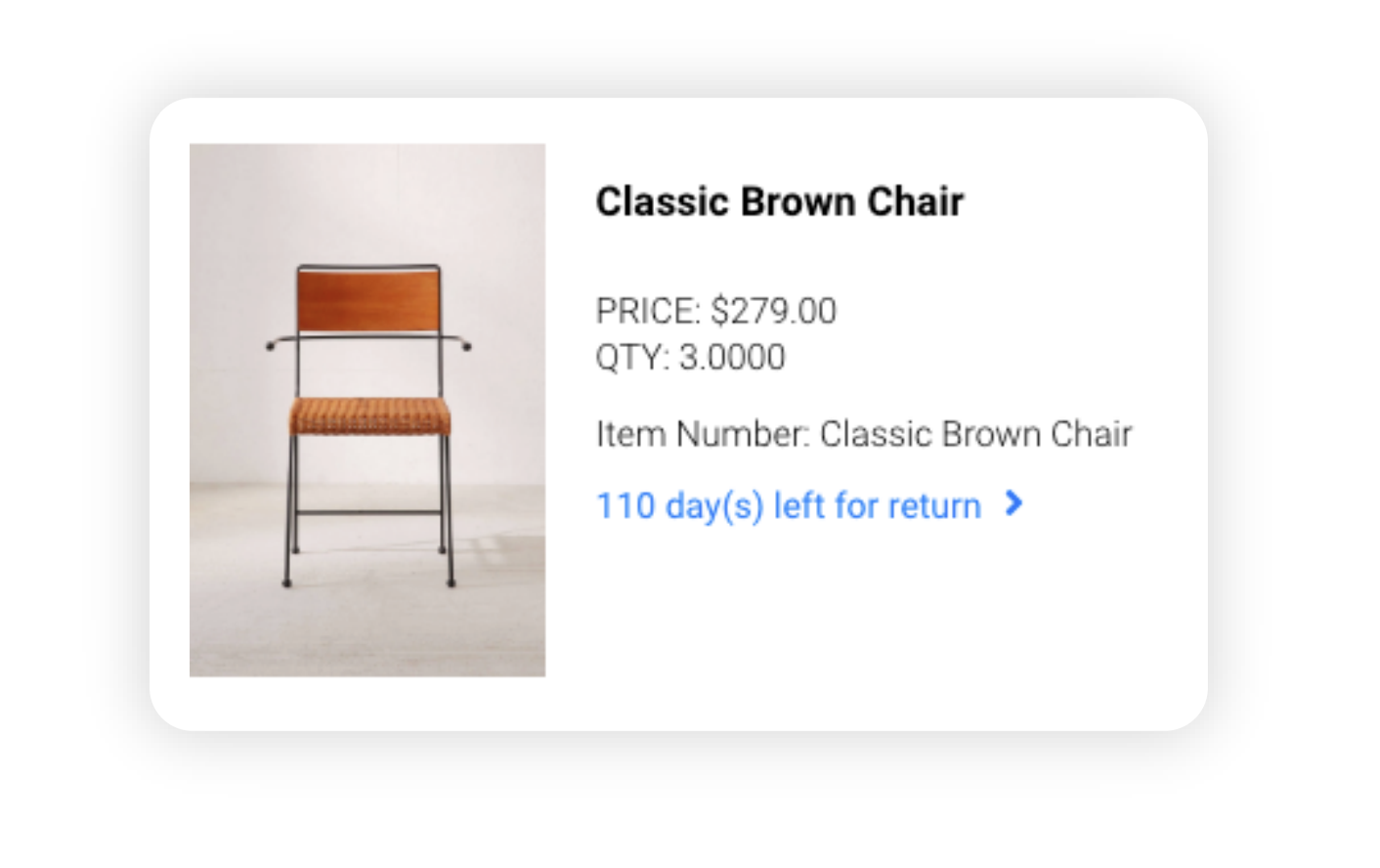
Set Expectations: Setting the right expectations from the beginning has been a recurring theme throughout this guide. Clearly list the amount of time the customer has in order to make a return on a specific item. Use this dynamic counter to remove any guesswork on the customer’s part. Avoid relying on blanket statements tucked away in the terms and conditions page.
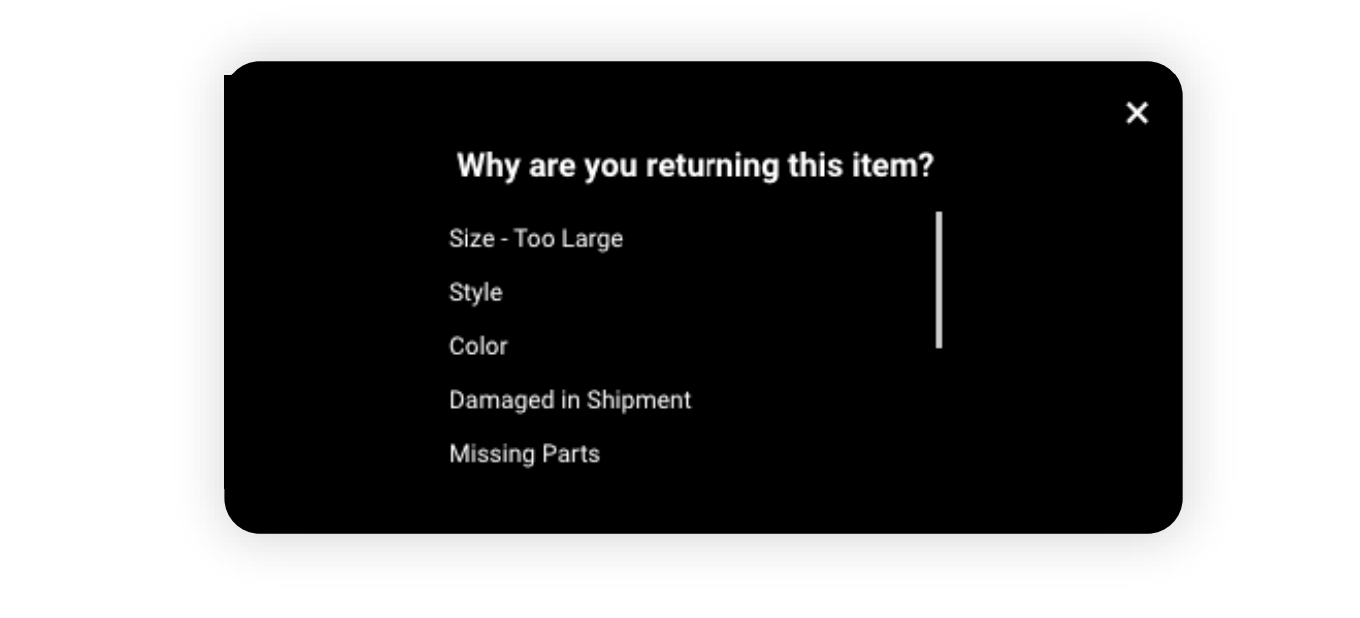
Ask What’s Wrong: Since not every return is the same, be prepared to handle them differently. By asking the customer why they are making the return you gain information that helps identify key patterns and trends. In this regard, customer feedback surveys are your best friends! This also allows you to create different return rules based on specific reasons. For instance, you may opt to waive the return shipping fee if a customer’s item was damaged in shipment. After all, there’s more to customer feedback than product reviews, and it is one of the greatest sources of learning for your business.
Return Label Generator: Many retailers include a pre-printed label with every box they ship out. This is convenient for customers, but each label costs upwards of 35 cents to throw in the box. This sum adds up quickly when volume picks up, and oftentimes these labels aren’t even used. Save those valuable margin points by letting the customer self generate the label if they’d like to make a return.
Reverse Logistics: Customers want to know when to expect their refund so let them track their return. This is why being crystal clear about your return and refund policy is essential. Mitigate anxieties and “where is my refund?” calls by including the return tracking number, shipping events, and empowering customers through proactive messages and transactional emails. Remember to make it easy to opt-in/out of these notifications, such as post-purchase emails.
A flexible return policy gives customers options in how they’d like to receive their refund. Each provides specific benefits for the customer and retailer:
Store Credit & Gift Card: Instant satisfaction for the customer and mitigated revenue loss for the retailer; a true win-win. Store credit and gift cards boost retention by tying customers to the brand and increasing their likelihood of becoming an advocate. Unlike a promotion or discount, store credit usually doesn’t expire. Another benefit of store credit and gift cards is the perception of “free money” in the hands of the customer, creating the possibility of a repeat purchase.
Customers feel less apprehensive about spending the store credit, unlike cash which they can save for other things. When using store credit they’ll often buy something at a higher value and add some cash to cover the balance. Many successful retailers use the store credit to extend their return policy. First, they offer the option between cash or store credit, then strictly the latter for a longer period.
Reduce customers’ return-based anxieties to flip a typically bad situation and give them a positive perception of your brand! Omnichannel retailers have a unique advantage when it comes to changing perception by offering more options and flexibility to improve the customer’s post-purchase experience.
Even in today’s digital age, 20% of consumers still say they prefer making their returns in-store. Customers cite reasons such as avoiding the associated shipping costs and a quick refund process.
Four of the main reasons customers prefer in-store returns include:
In-store returns don’t only make 20% of online shoppers happy, but they also have major benefits for retailers.
The “do’s and don’ts” of introducing in-store returns to customers is best illustrated through images.
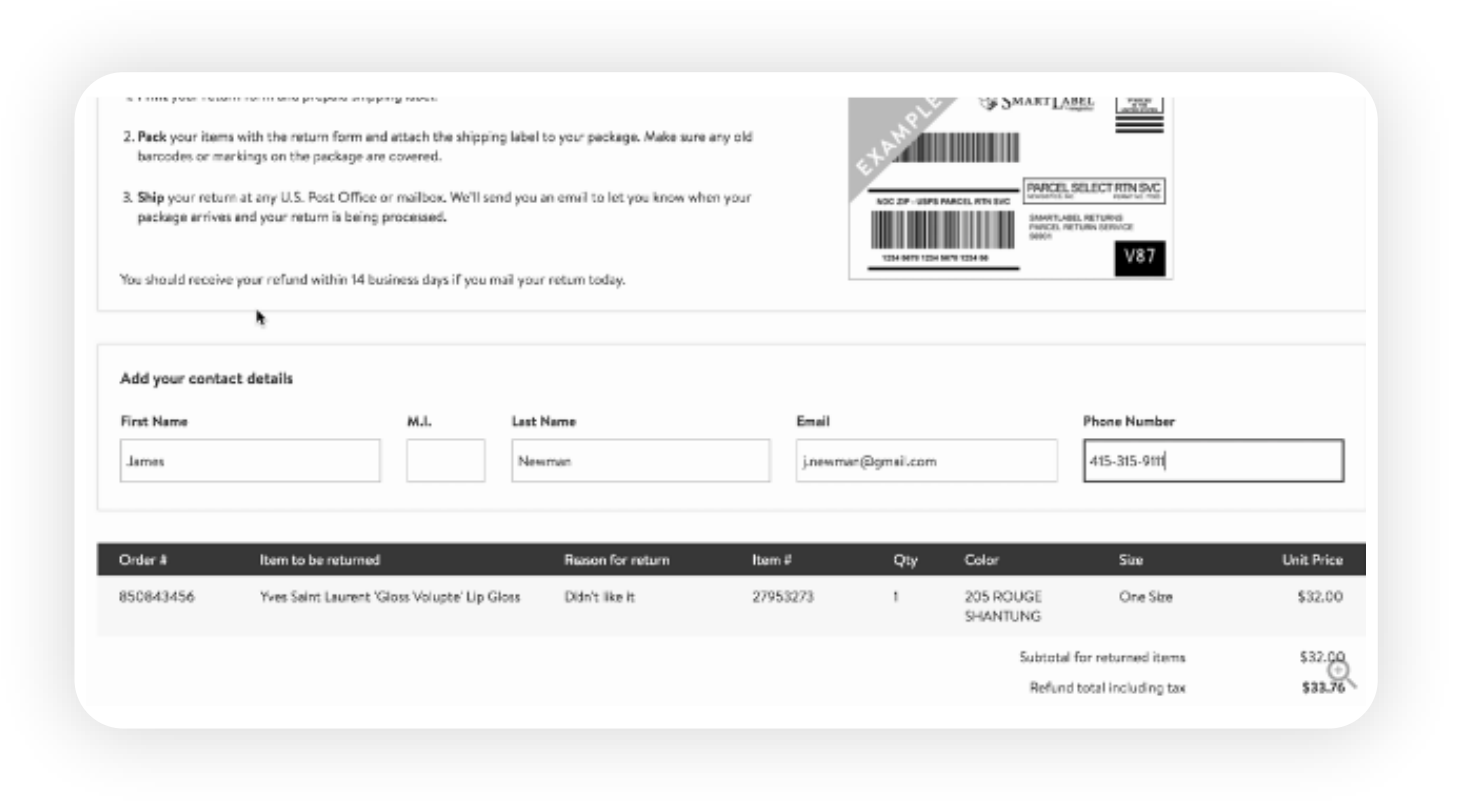
50% of online retailers don’t promote in-store returns alongside mail-back options at all. Nordstrom provides the option, but only represents it with a small, out of sight text blurb. This is a missed opportunity for a competitive advantage over online-only sites. Ultimately it alienates a group of customers who prefer in-store returns for cost savings, convenience, and speed.
Best practices for introducing in-store returns to customers:
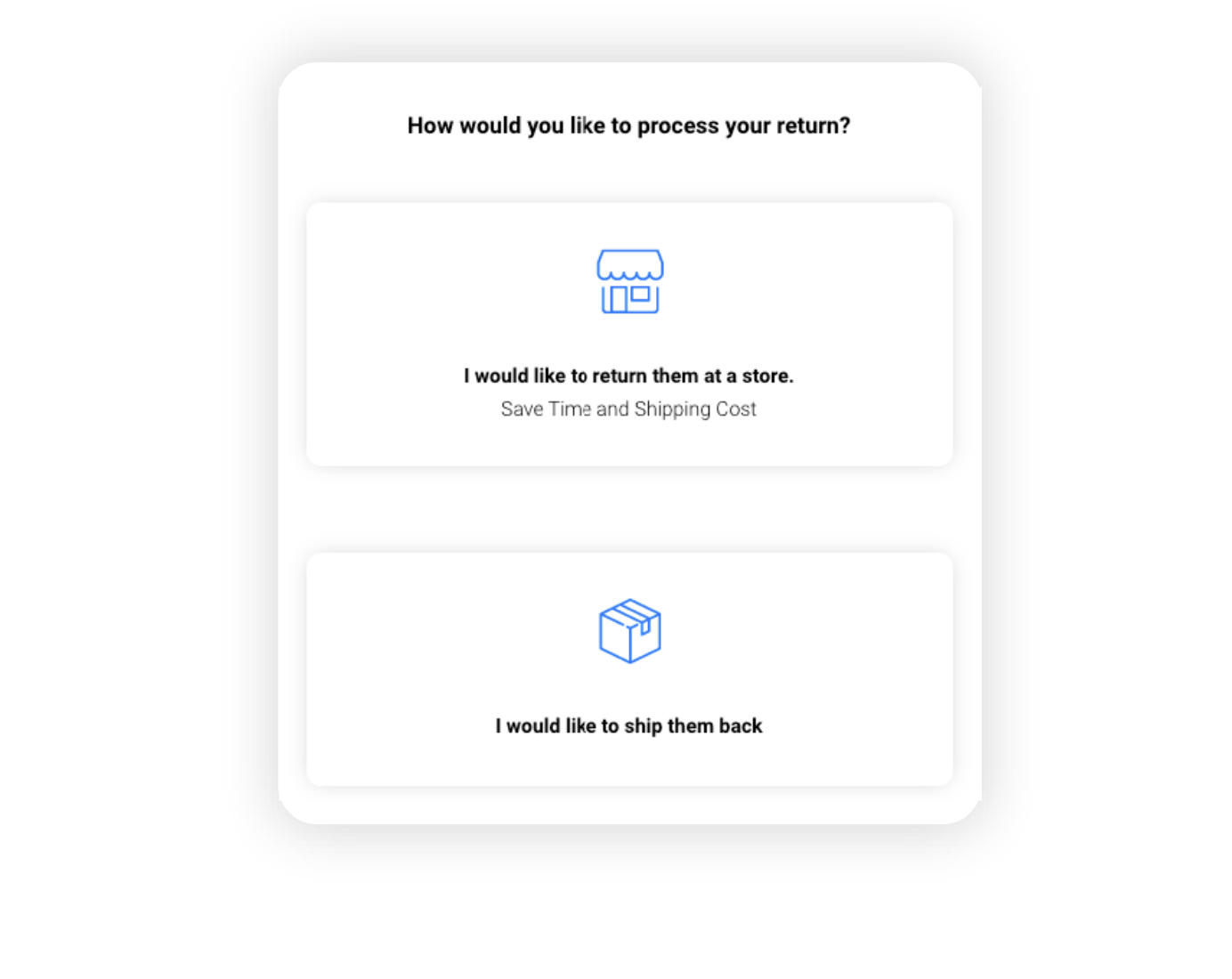
Keep It Simple: The option to return in-store needs to be easy to find, clearly communicated, and intuitive to follow. Note that both options are equally represented. List the value right under the title to entice customers.
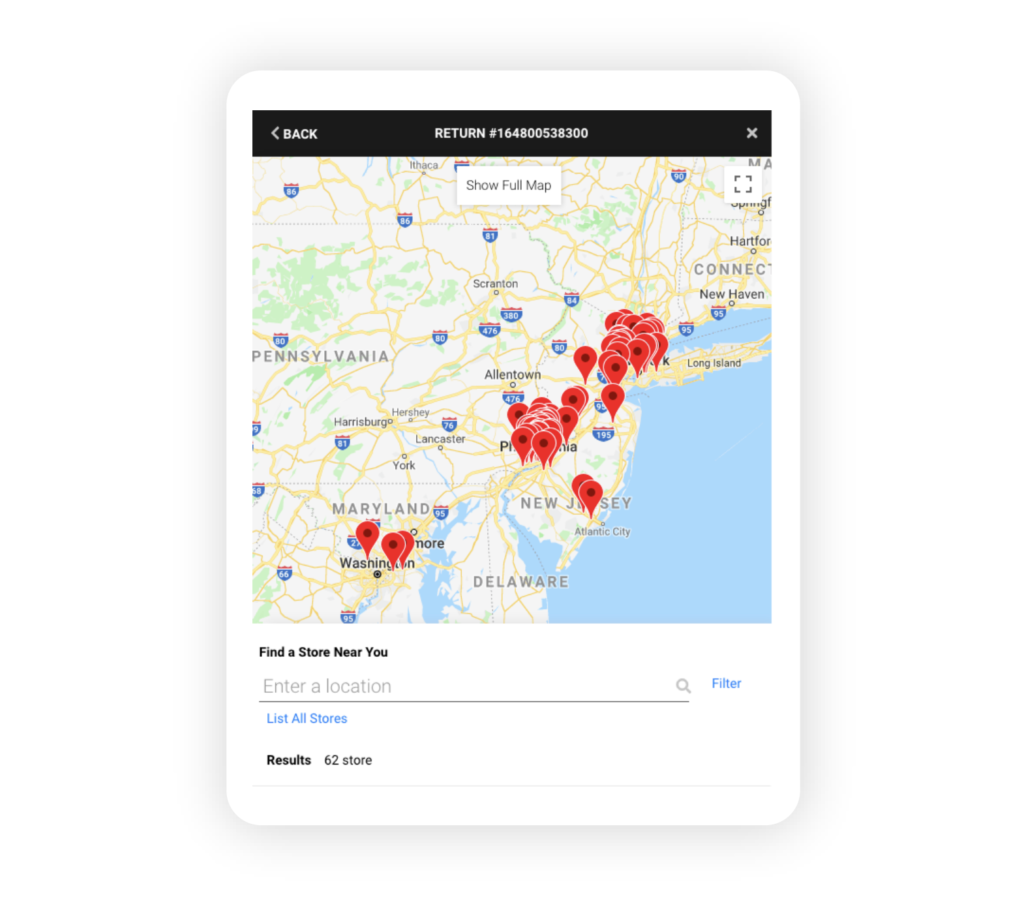
Store Locator: Help customers find the brick & mortar door closest to them with an interactive store locator page. Customers might not realize in-store returns are their best option without being able to see which locations are close by. Educate them and make their experience effortless.
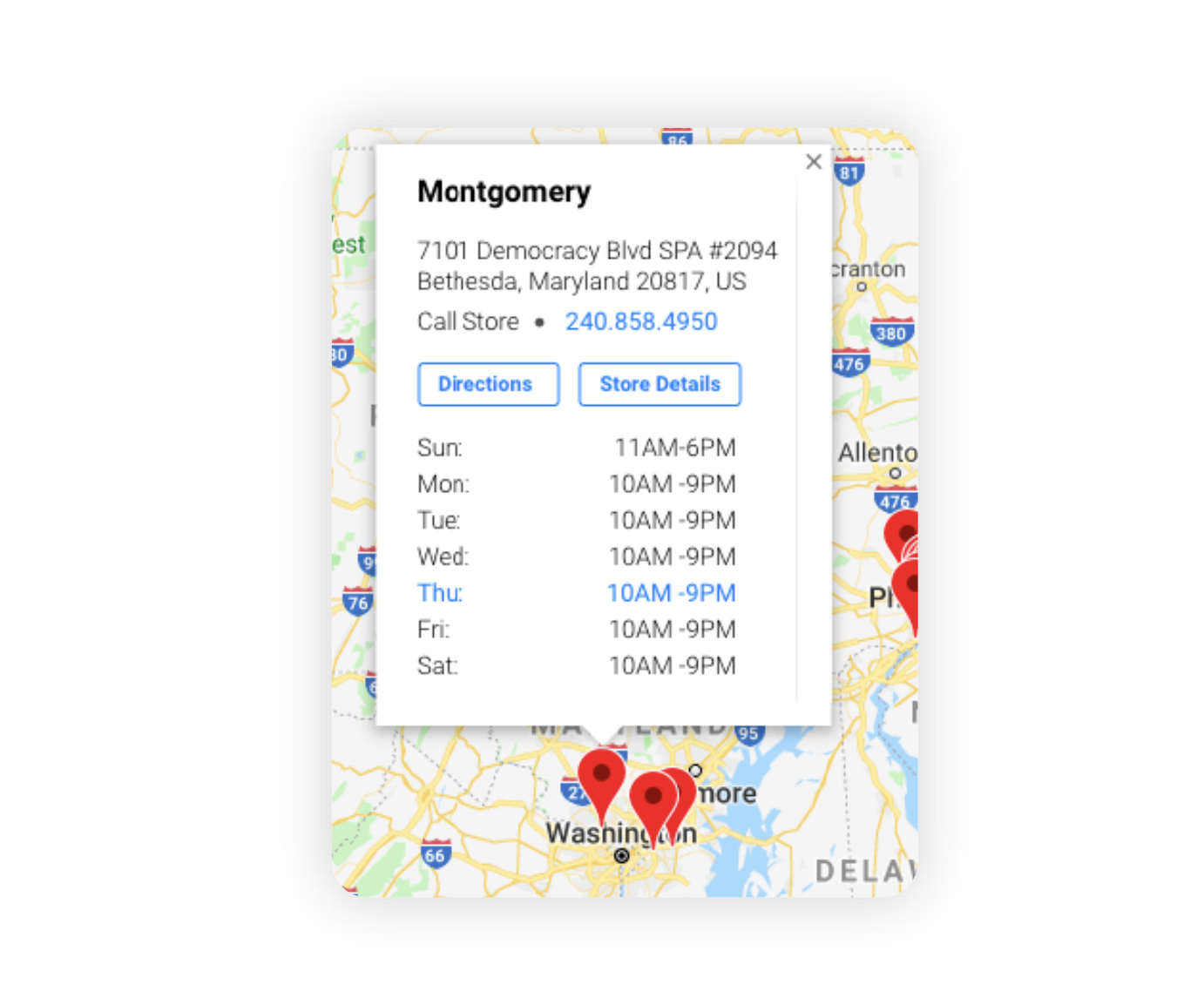
Interactive Map Markers: To select a store the customer simply clicks the nearest map marker. Display key information through a pop-up window, and include a link to Google Map directions and that store’s profile page.
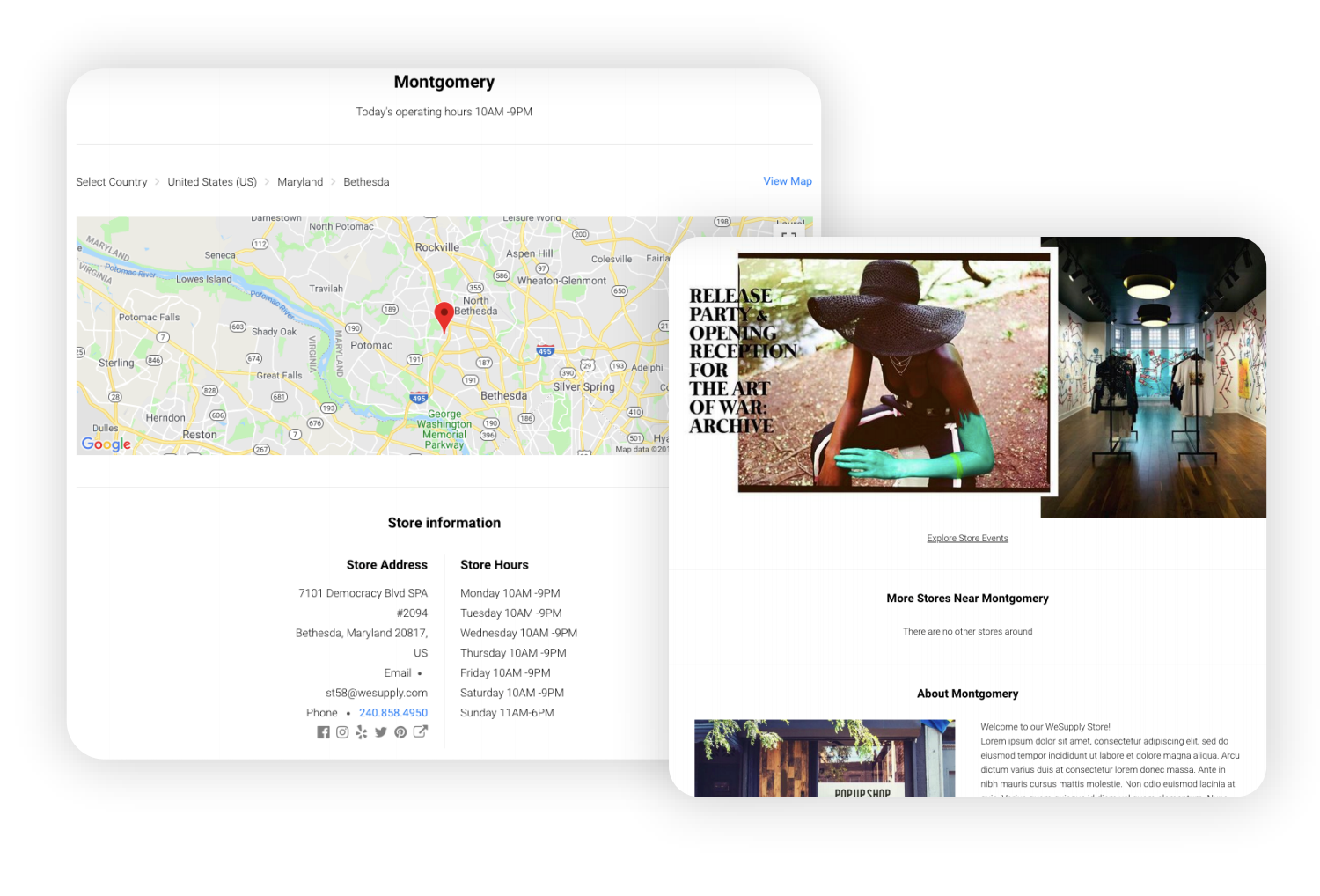
Comprehensive Store Detail Page: Familiarize customers with your store. The store detail page should be customized to convey clear information and highlight some of the location’s personality and make the experience memorable.
Order confirmation emails are like oxygen: indispensable. You need to let your customers know that their order has been processed and is on its way to their homes, and there is one effective way to do this, and that is through email. Sending automated emails is great for both your customers and your team, giving you the best of both worlds. Tap into the full potential of automated transactional emails, and we guarantee you will see an improvement in various areas of your business.
Learn how WeSupply can help you and your team grow while providing exceptional customer service, and contact us if you have any questions!
Loyal customers are more likely to become brand advocates, and you can achieve this by simply improving the post-purchase flow.
Amazon, Best Buy, and Apple have changed eCommerce by avoiding business-centric thinking and instead focusing on their user, raising customer expectations to an all-time high.
You can deliver this same experience by understanding what your customers want and being able to deliver it ahead of time. Focus on customer care, self-service, and proactivity to stay relevant and you can do a great job competing with these big brands!
Get a free demo to see how WeSupply can work for you
Our shipping and logistics experts will guide you through the product and analyze how WeSupply best fits your eCommerce needs.
Learn How To Create Successful Post Purchase Email Campaigns
Build an effective post-purchase email flow that helps you increase customer satisfaction and drive revenue growth!

BigCommerce vs WooCommerce: Which eCommerce platform works best for your business? Read this article to find out!

The LimeSpot team rounded up for you 9 smart ways to engage first-time shoppers and keep them coming back for more. Keep reading here!
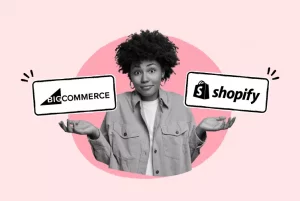
BigCommerce vs Shopify: Which platform works best for your business and what to consider before signing up for either? Find out in this article!

What is churn rate, how does it affects retail businesses, and how can you reduce it with effective post-purchase strategies? Find out here!

Shopify SMS marketing done right! See how to integrate your SMS marketing apps for Shopify to build a successful post-purchase strategy.
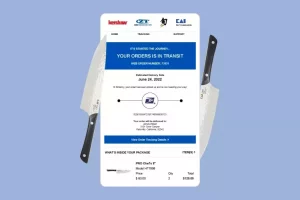
Keep reading to find out how Kai USA managed to remove 92% of order-related support inquiries using WeSupply as their post-purchase platform.
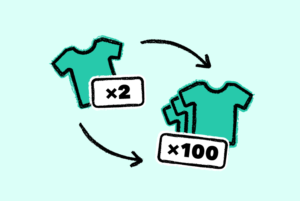
What is the Minimum Order Quantity or MOQ? Meaning and everything you need to keep in mind before sealing the deal with a supplier.

What does backordered mean and how does this affect your retail business? Check out this article to find out!
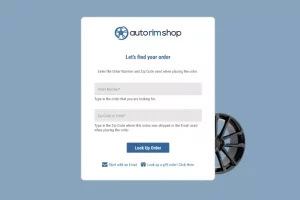
Auto Rim Shop automates the Delivery and Return Experience for heavy items fulfilled and returned directly to dropshippers.